The pan
Etosha National Park is a game park… so yes… animal spotting is the biggest activity all around. Various waterholes, where animals congregate especially in the dry season, are spread along the route running south of the actual pan.
But, even if for most visitors the major goal is animal viewing, for us a visit close or onto the pan was as important. There are a few tracks that skirt the edge of the pan but there was only one point where a gravel road takes you a few hundred meters onto the pan. So yes… that was meant for us!
We drove out onto the Etosha Pan: an immensely large dry pan of which you can’t see the other side. The road to the view point is a proper gravel road, not just a track onto the pan. Otherwise we probably would not have been able to drive there. With Trokkies weight, the crusty surface of a dry pan is very tricky and we wouldn’t want to sink into the mud under the crust! But as said… a decent path, so we could go all the way and eventually park with nothing but pan around us. It’s an amazing blinding white expanse set against the deep azure of the sky. It felt as if we were standing in a snow field… but not as cold of course! To our utter amazement, some lonely ostriches or small groups of antelope, were walking around way far out on the pan. We wondered what they found to eat in the dried and cracked clay.
It was interesting to see how many 4×4 vehicles must have gone off the road to test their 4×4 capabilities in the dried areas next to the road. There were many wheel tracks and donuts visible beyond the fence.
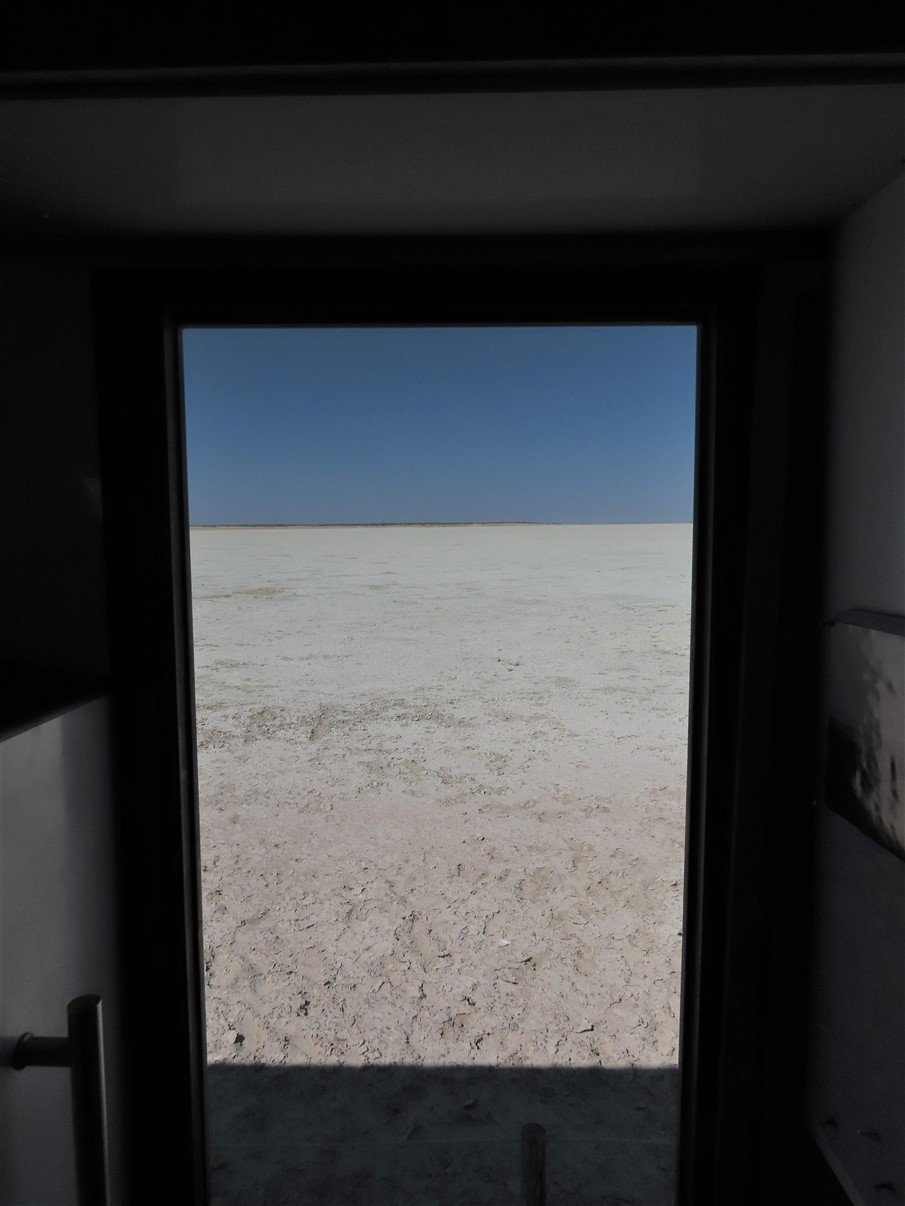
The landscapes
The landscapes were just amazing, ranging from the clay crusted pan to waving grass lands crisscrossed with animal paths and thorny trees providing little shade for the animals.
One of the most awesome impressions that always stuns us are the sheer plains stretching out into eternity. The flatness of the land allows the eye to roam over the distance to where land meets sky and weird fata morgana’s make trees and animals float in the air.
We saw several parts of the park that must have burned recently, because everything was black and ashy. It was amazing to see however, how animals will find the tiniest growth of new green in these burned sections!
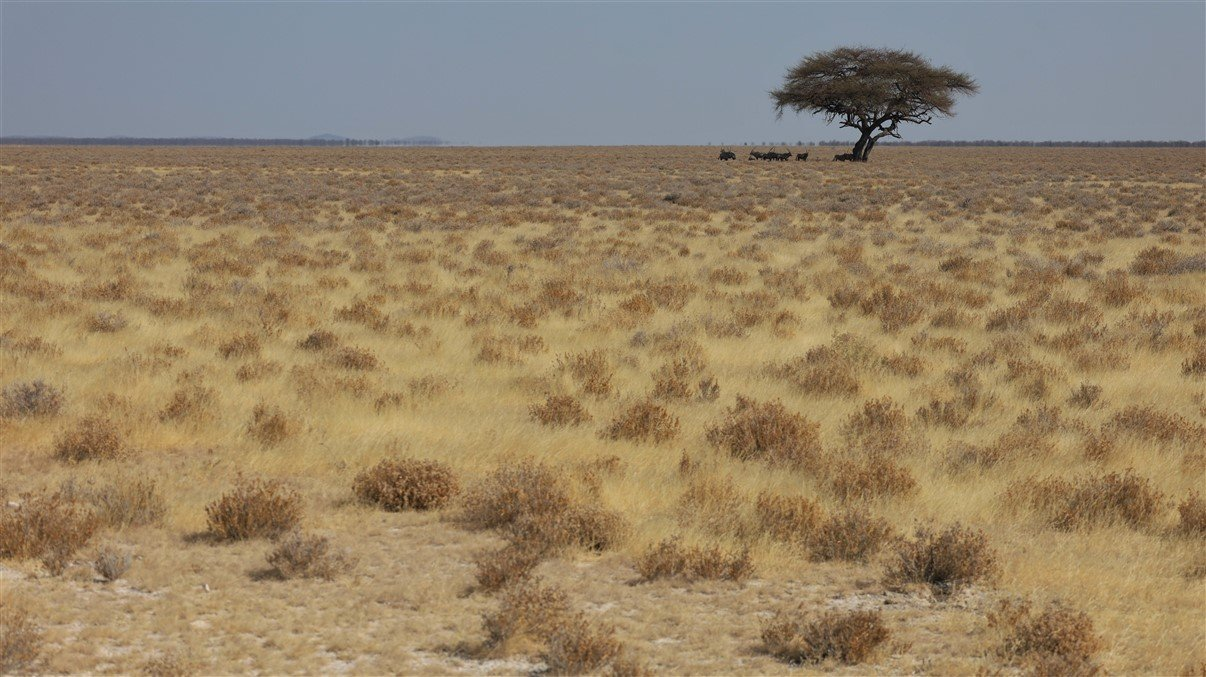
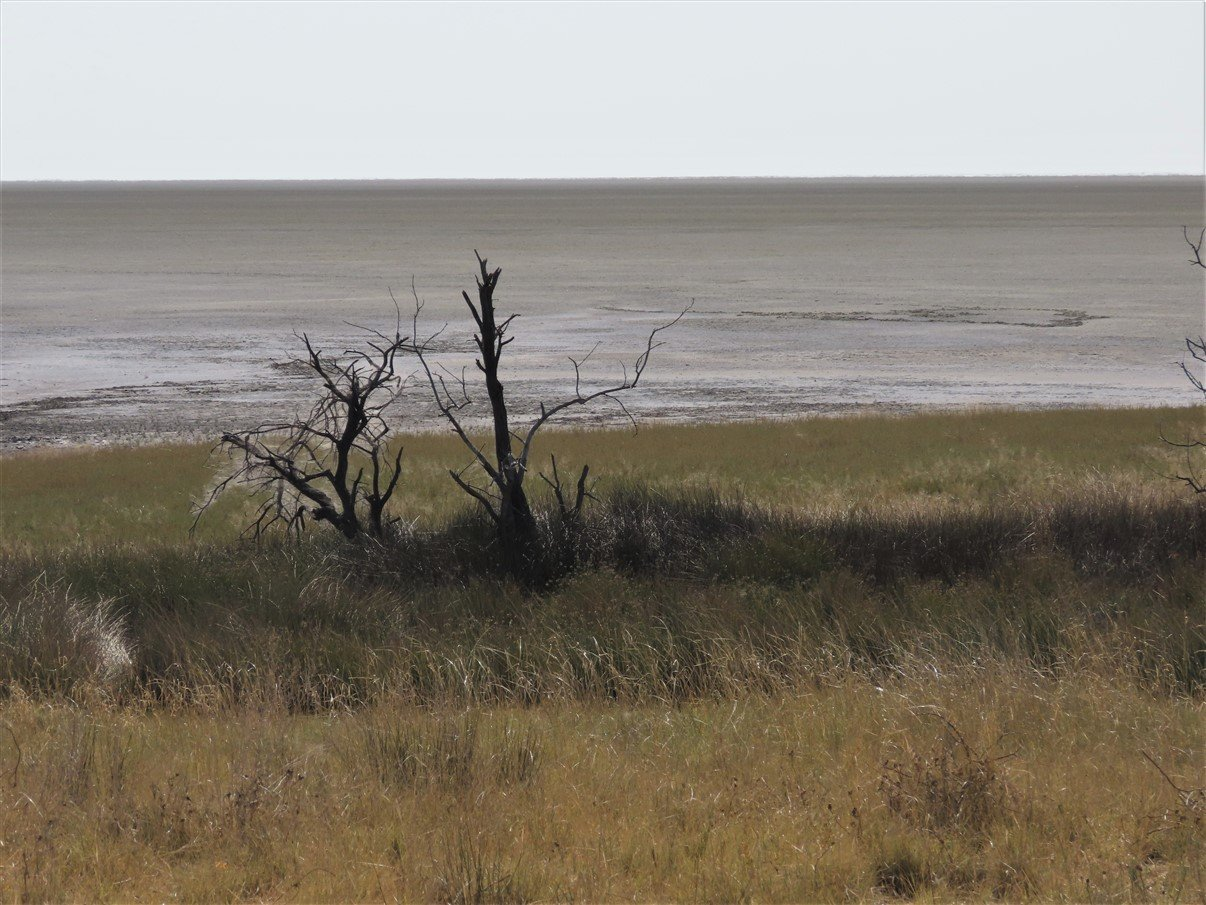
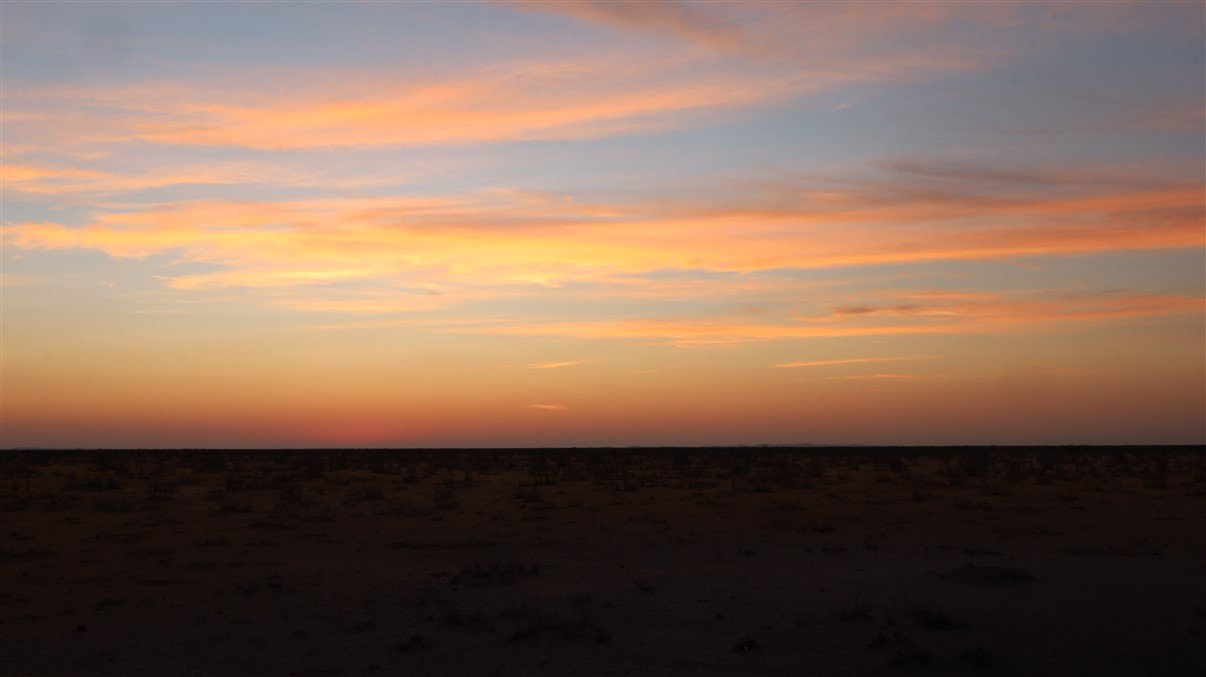
Animal encounters
Enjoy our random gallery of animal encounters in Etosha. Some animals are regular customers and we see them with the hundreds. Others are more scarce and then we are more fascinated by their presence.
- Although we recently had seen a committee of vultures at the spring when we went rhino tracking, it’s still a wonderful sight to see them parading along the waterhole.
- On this trip we saw several pregnant hyenas. Where we had seen a whole family somewhere in Kruger, here we saw them very much alone. I think there was one moment when we saw two or three together disappearing in the bush, but at the waterhole it was usually a single one and usually pregnant. We don’t know if it was the same one making a pub-tour, but the ones we saw were pregnant.
- We were fascinated by the agility of the long legged giraffes. Now you try to copy that pose for drinking at the waterhole. And another thing we hadn’t really seen before: a giraffe grazing. We are so used to them stretching their necks to reach the juicy leaves of the trees, that seeing one with its long neck bend down the graze in the grass was quite a revelation. We wonder if they have a stiff neck the following morning!
- For us, one of the cutie-pies in the African bush is the warthog or, as our granddaughters call them: the pumba’s. They are little stocky animals, but when they run in the bush they are borderline elegant with their tail straight up like an antenna! This one was having a ball in the mud pool.
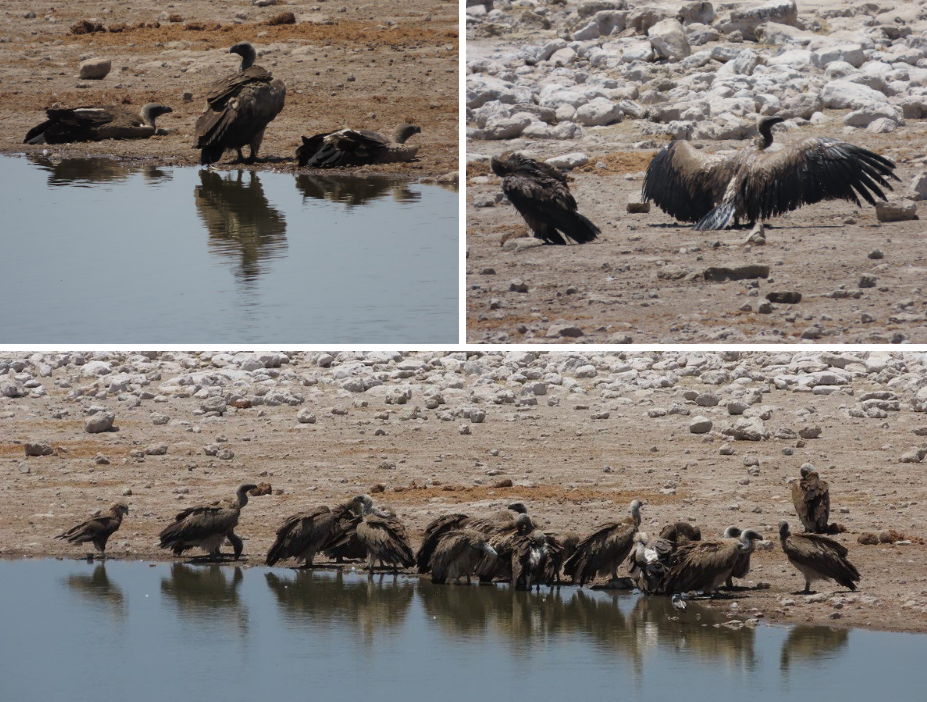
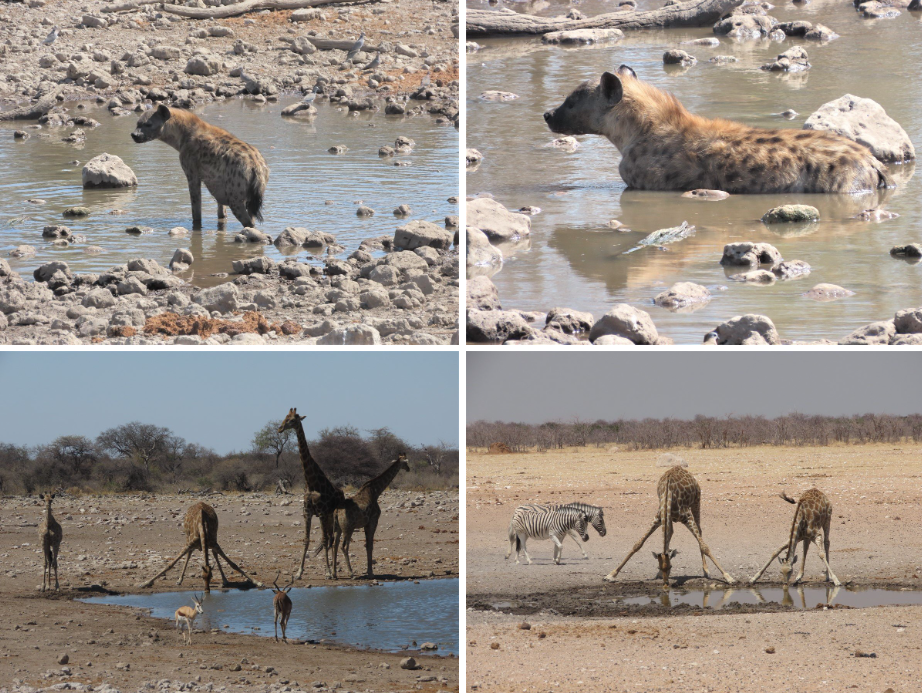
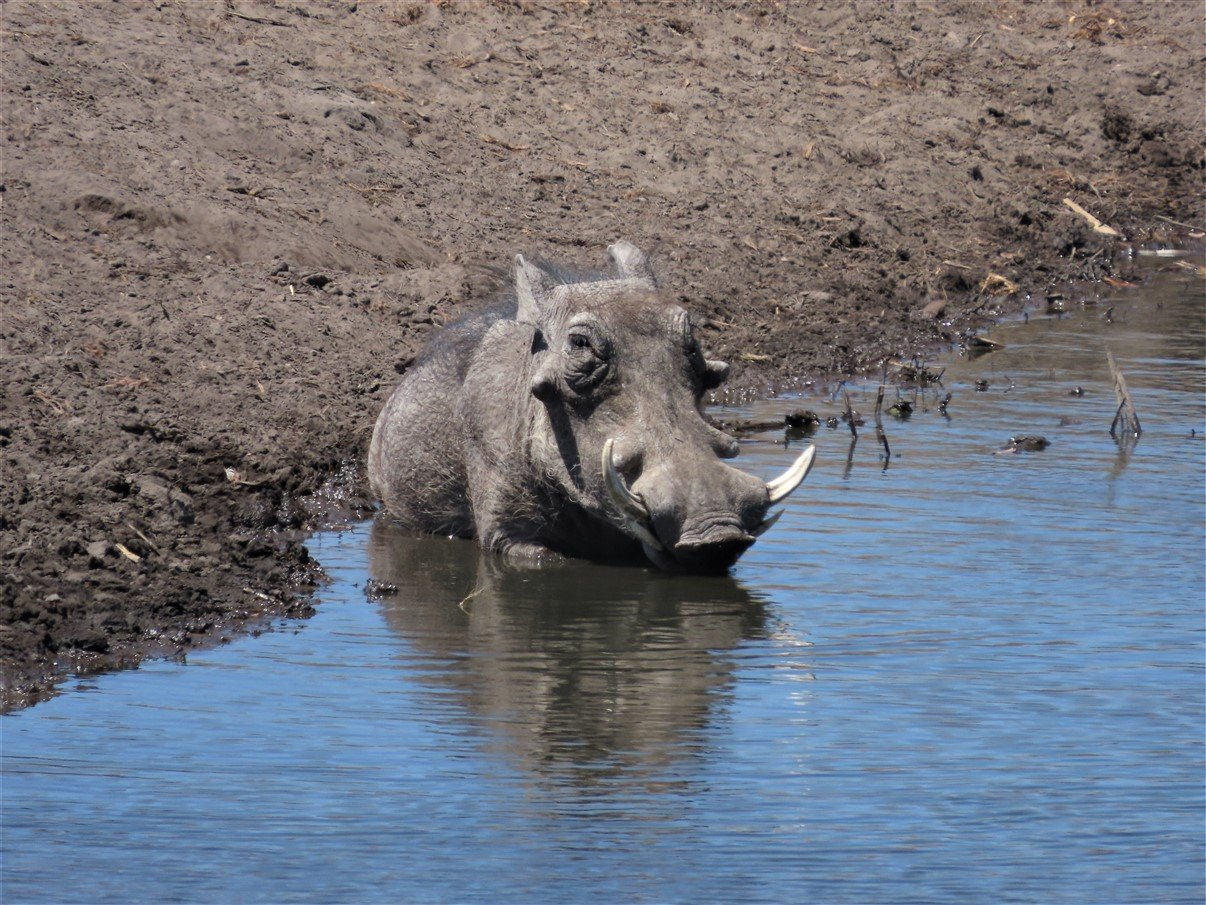
- The elephants are always lovable with the combination of their sheer bulk and- in general- docile and mild attitude. Fair enough… we had the impression that the elephants in Etosha were much less intimidated by tourists as for instance in Kruger National Park, and they seemed pretty unperturbed even if we had to pass them by very close. At one particular moment we saw from quite a distance, something that looked like a rock or a big white antheap (there are lots of those around) sticking out above the thorn trees. But when we got closer we saw it was a massive white elephant. It’s colour was so different from the elephants we had seen so far at the waterholes and they looked bigger (but maybe that was just in our imagination). Although he seemed to have been a lonely giant, later in the afternoon, our road back to the camp was blocked by three of them taking their time for supper at a thorn bush. We had to be patient and I think we stood still and watched them scrunch away for almost an hour.
- In contrast to Kruger National Park, where the white rhino population is about 10x the number of black rhino’s, in Namibia it seems the opposite : much more black rhino than white rhino. We had seen a few black ones when we went rhino tracking at Doros crater, but here in Etosha we were on the lookout for white rhino… and we got lucky! A few were grazing not too far away and were happy enough to stand still long enough for a halfway decent photo!
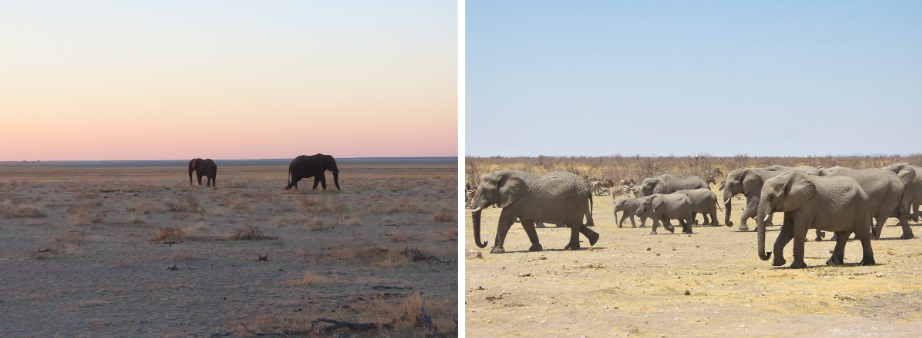
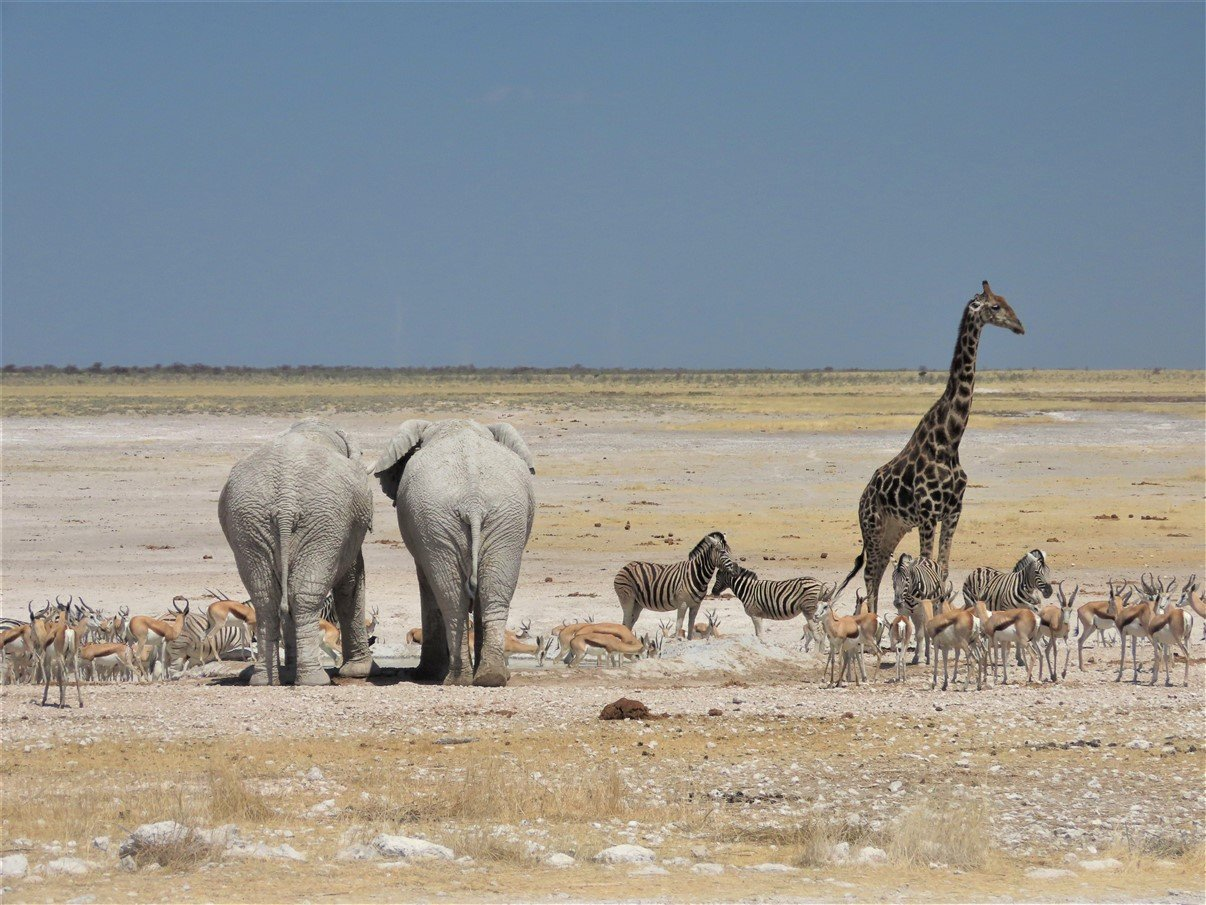
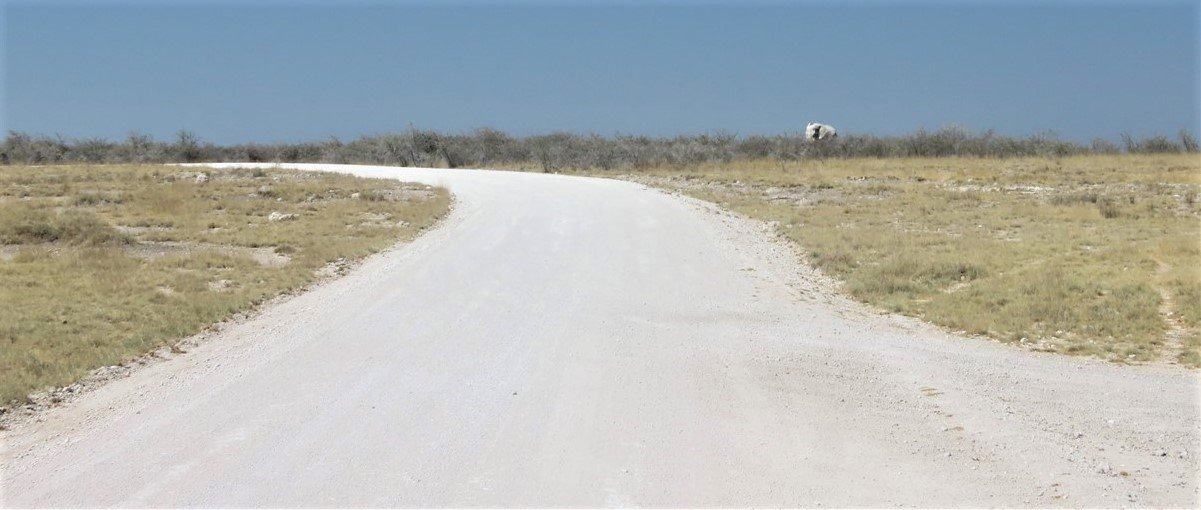
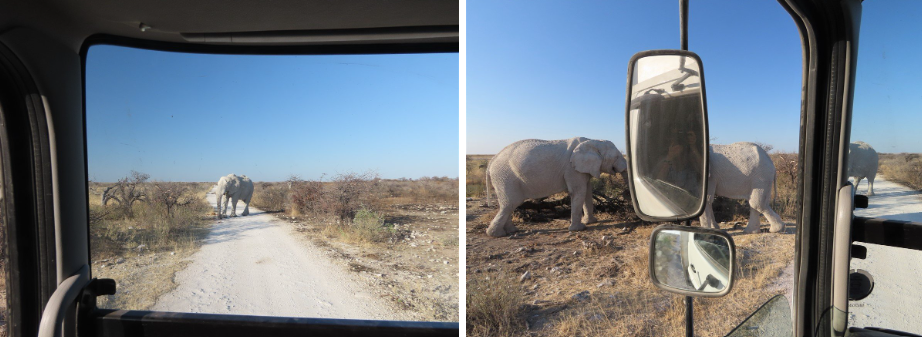
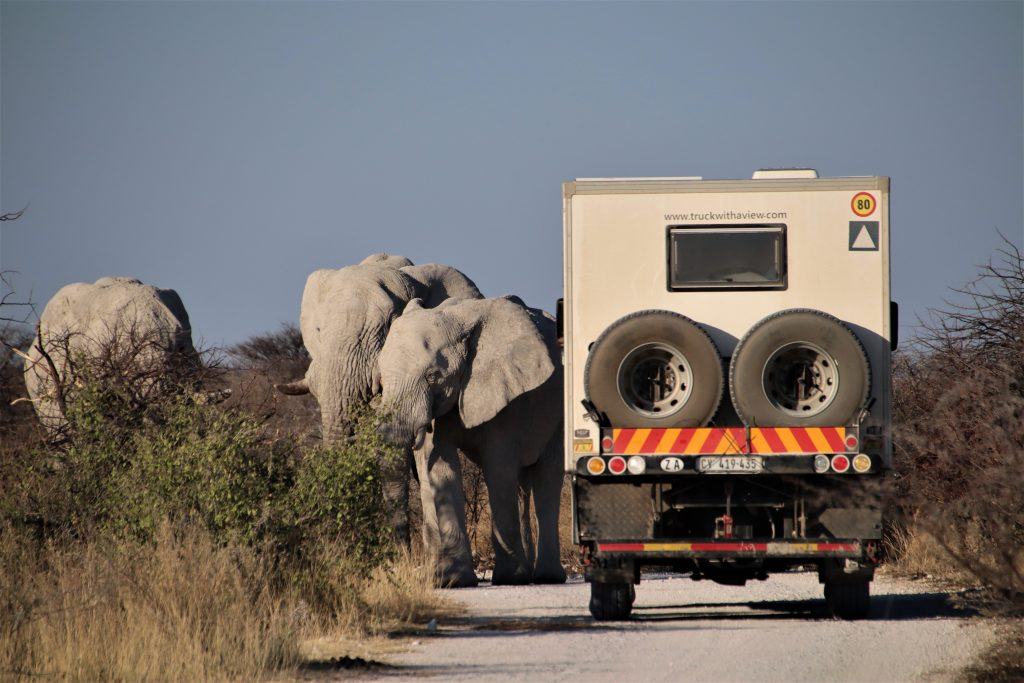
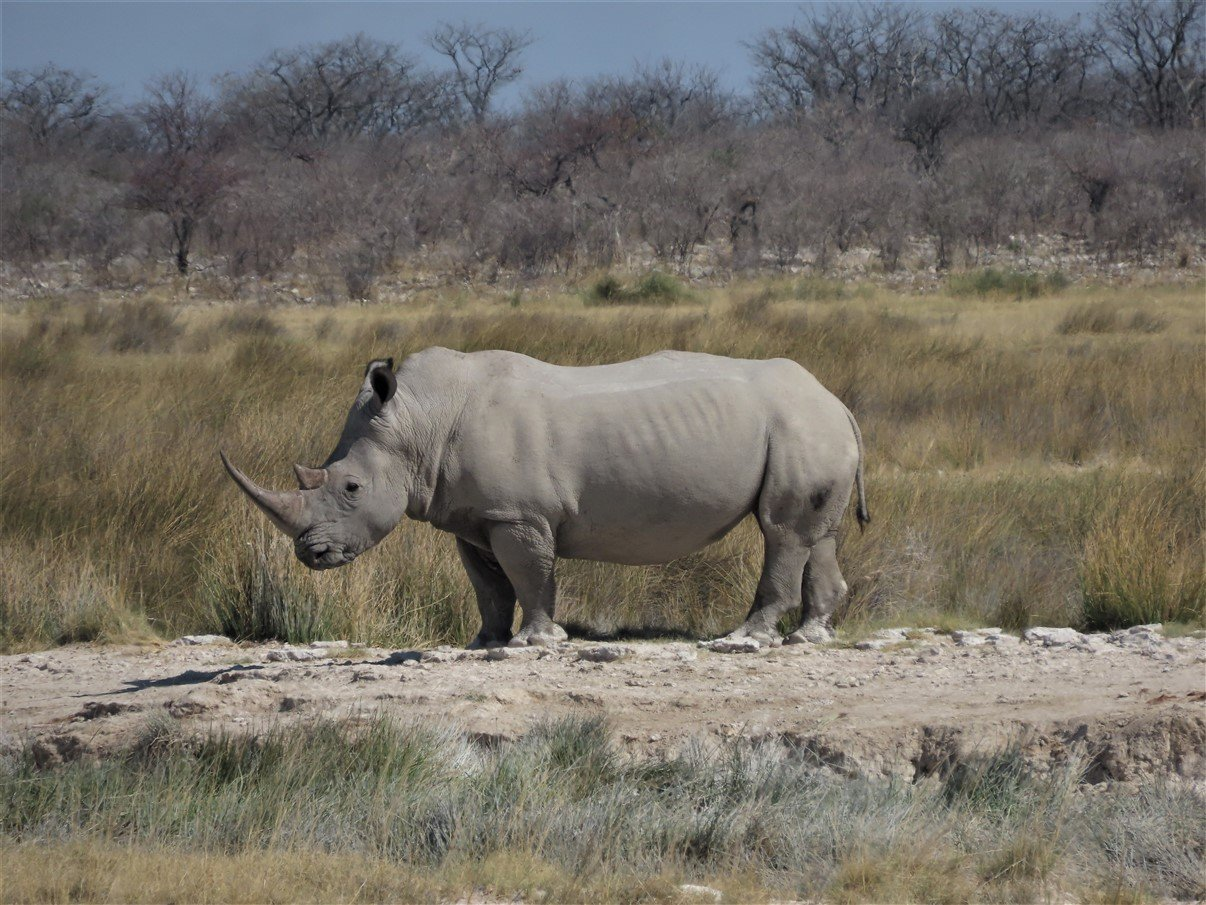
- We saw a reasonable number of jackal, either taking a snooze in the shade, tripping away in the bush, or scrounging at a carcass left by a pride of lions.
- And of course buck and antelope are a staple of any game park. When we first visited Namibia a few years ago, we had hoped so much to see gemsbok as they are iconic for Namibia, but hadn’t been lucky. On our past few months travelling through Namibia though, we had seen plenty in the wild. Maybe less than springbok and antelope, they became a more familiar sight in the Namibian context. Amongst all the antelope and buck we saw in Etosha, the biggest one of all, the eland must have been the most special, as we saw one, once! We were also lucky to see the smallest antelope - a dik-dik- as they usually are quite skittish and hide away in the bush.

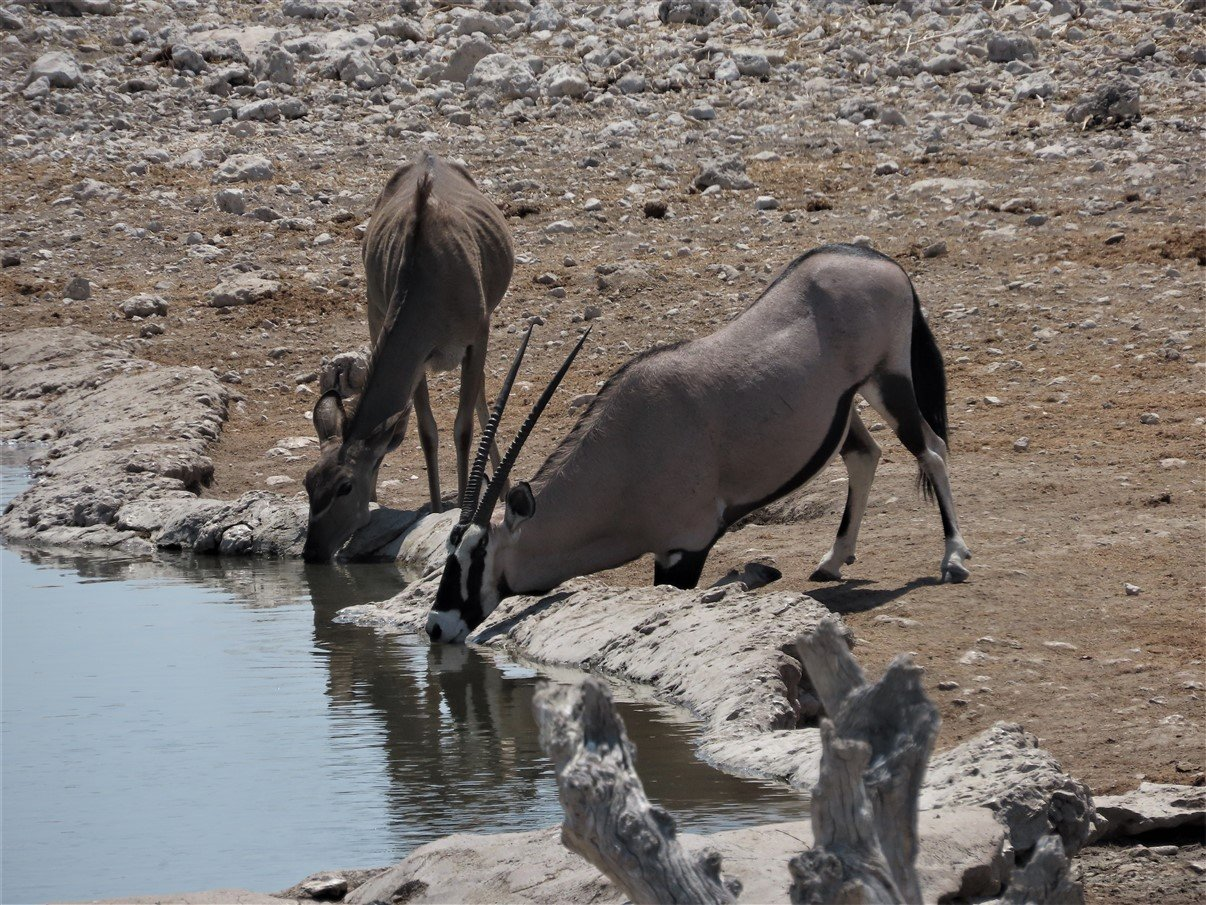
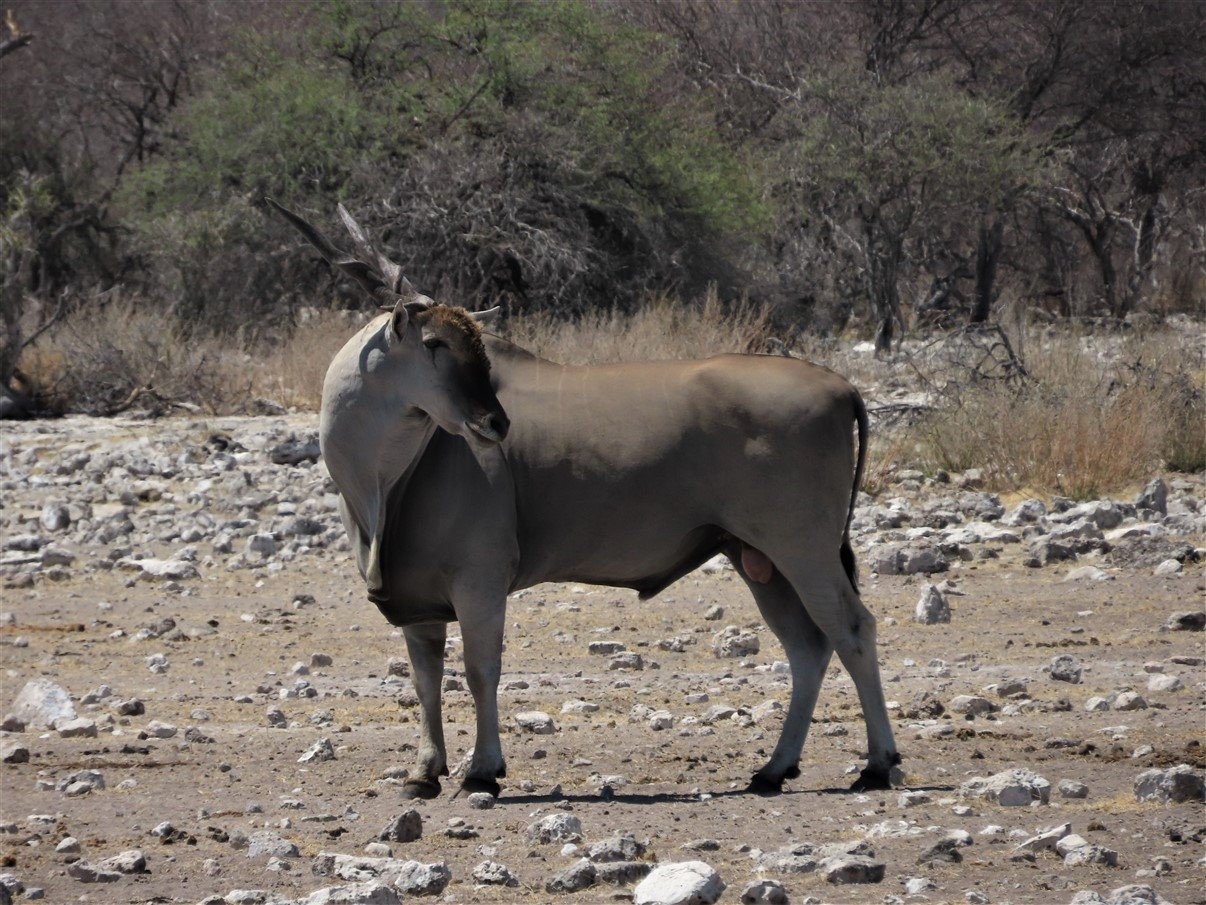
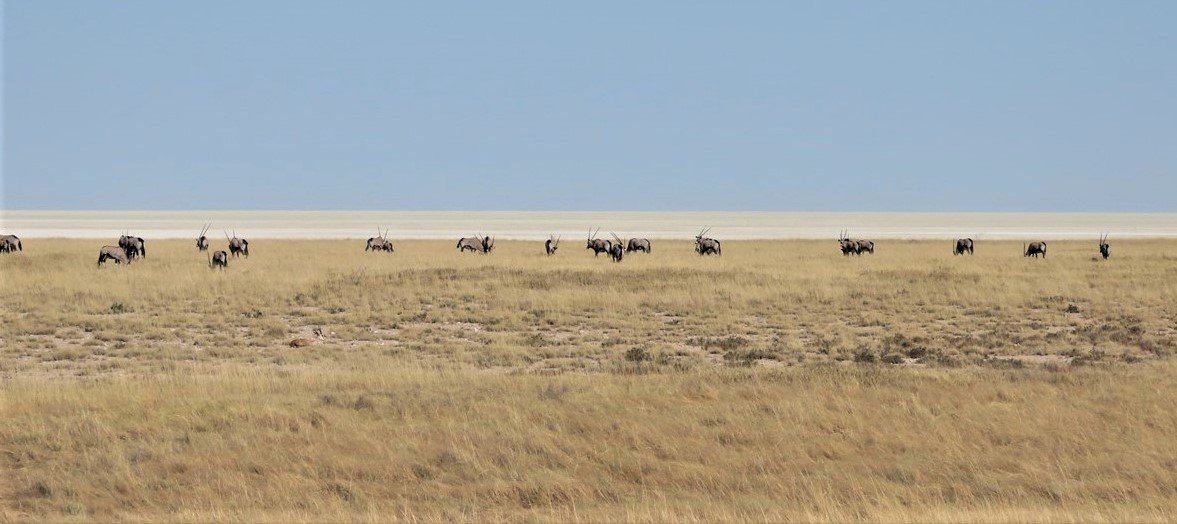
- Life in the wild is all about eat or be eaten. We saw a fair number of skeletons or parts thereof ranging from fresh kills that were still being torn to pieces by jackals to bones and skulls that were bleached bright white by the sun.
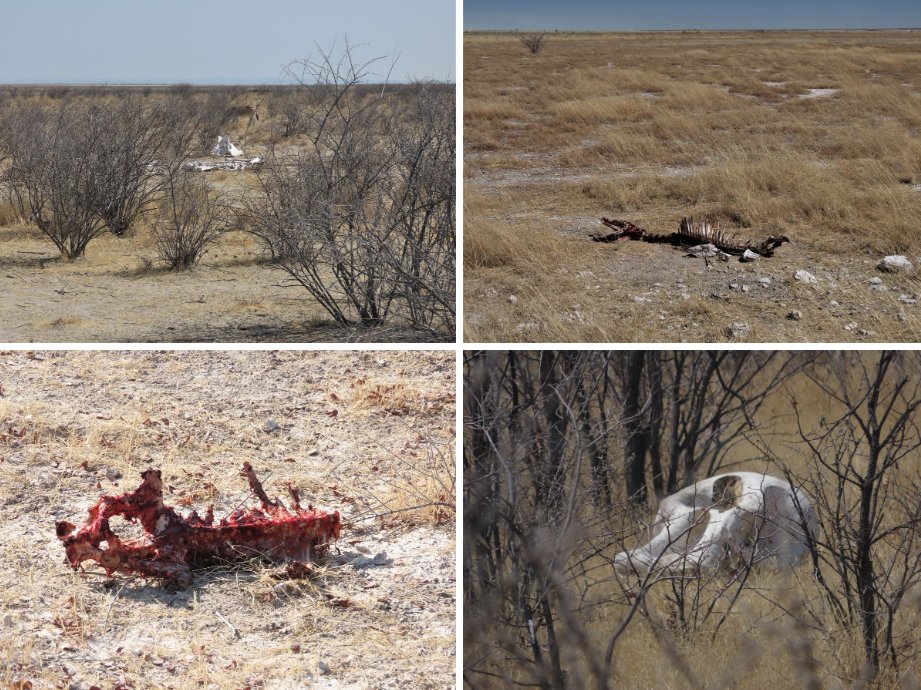
- Here are a few of the animals we saw in very lucky moments: african wild cat, a grasshopper, a rabbit or hare, and the by now quite familiar spider balls in the trees.
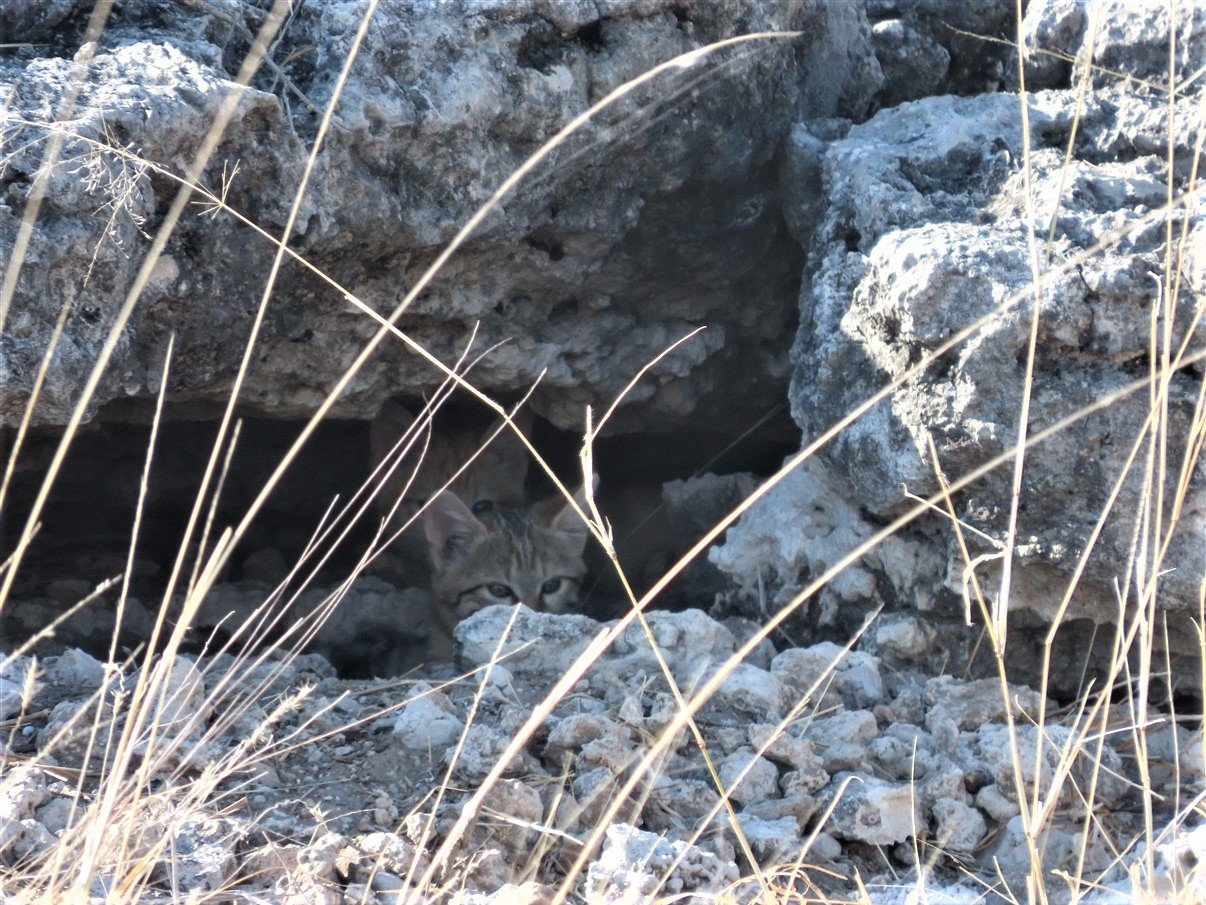
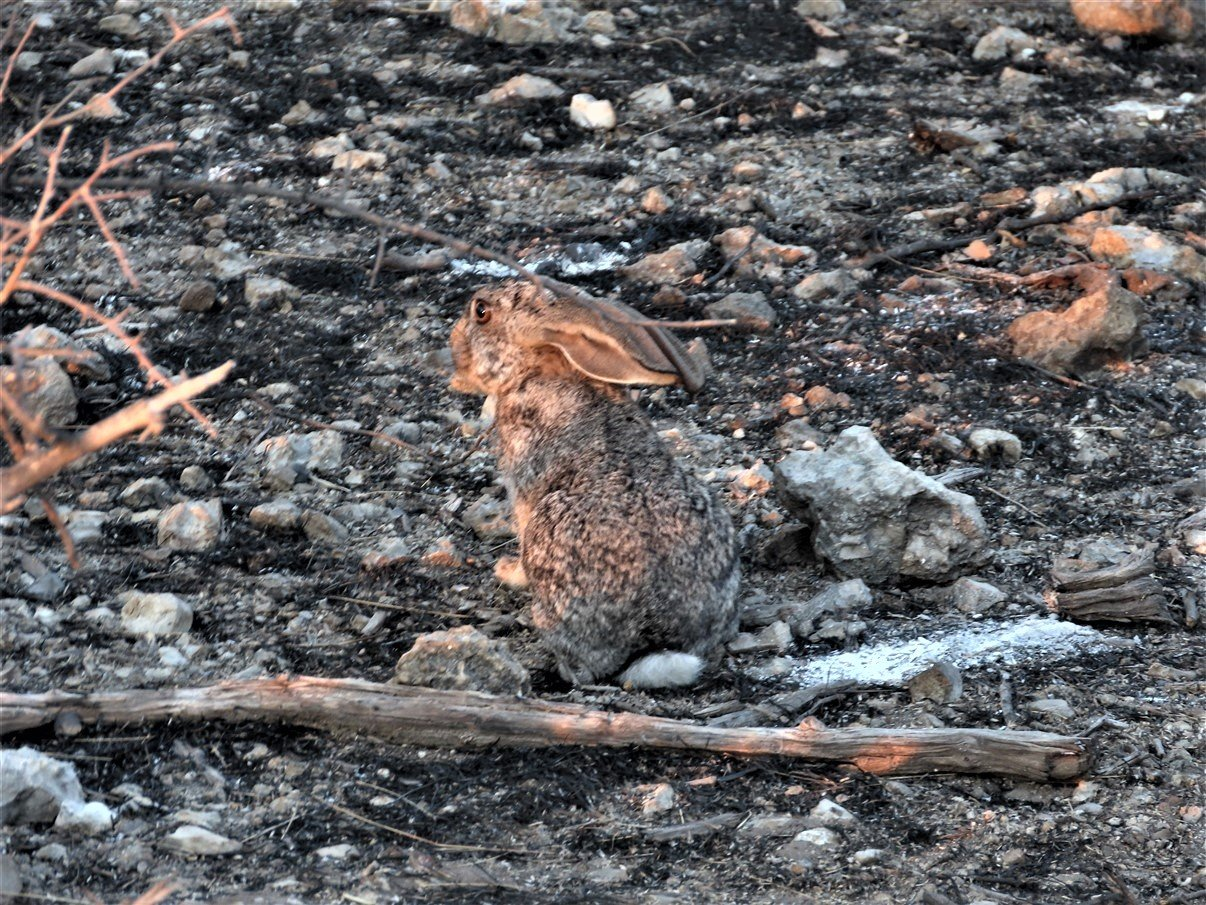
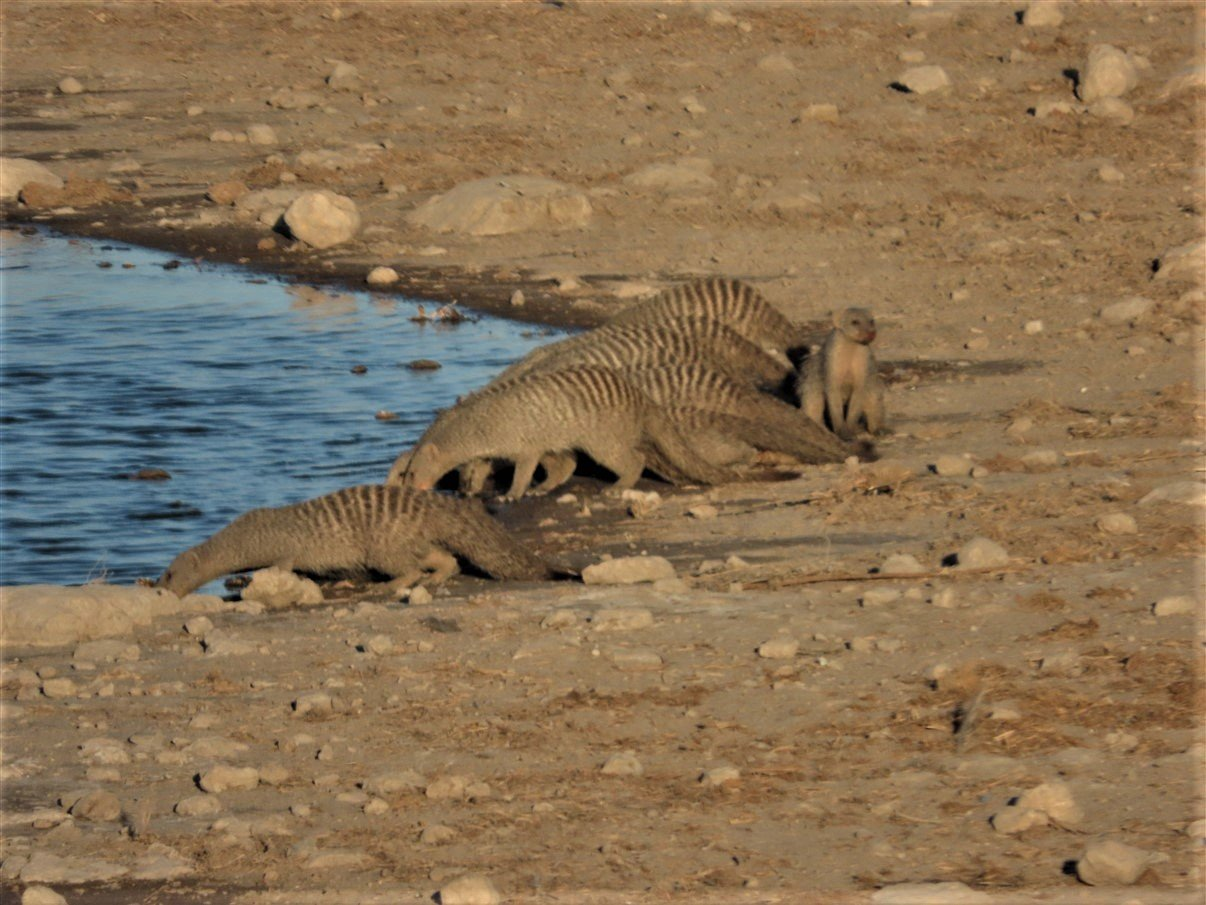
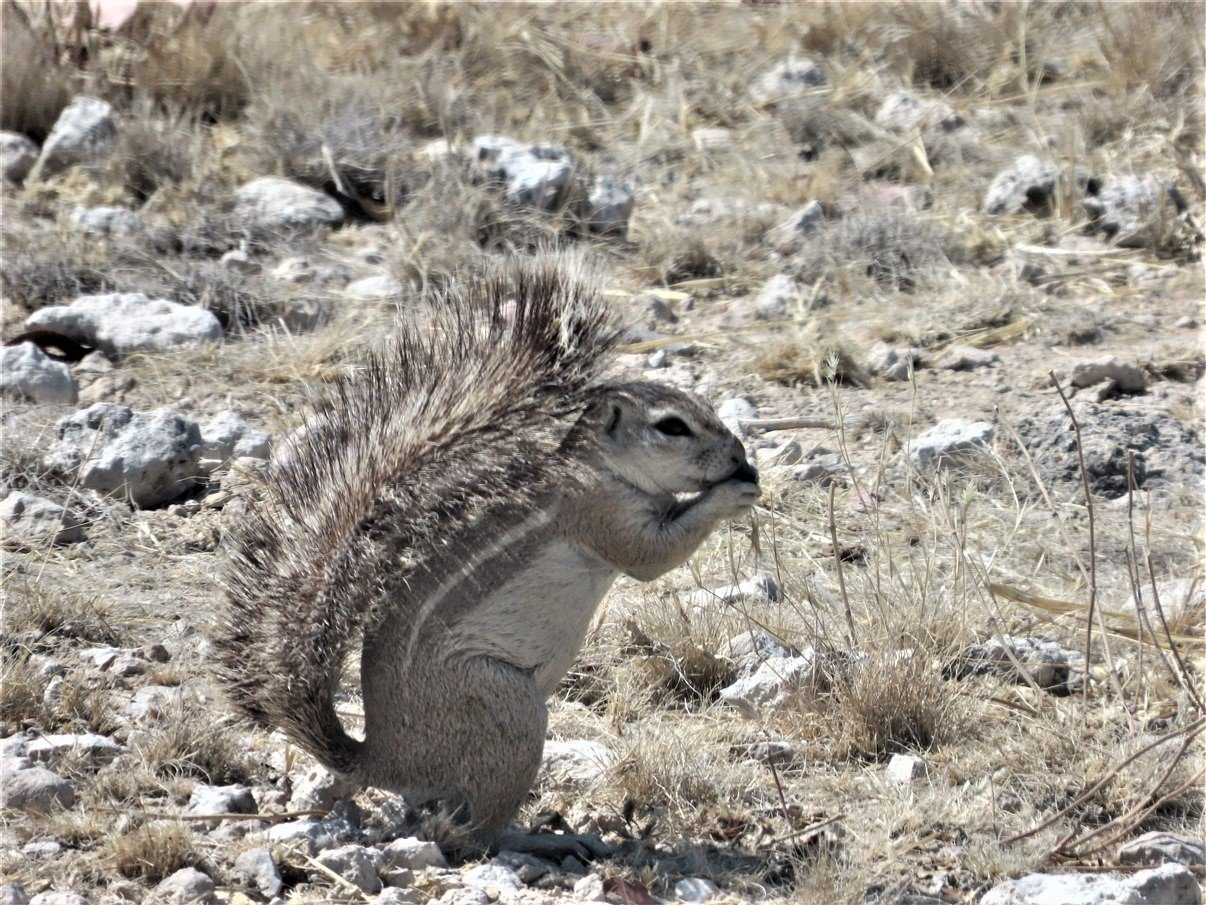
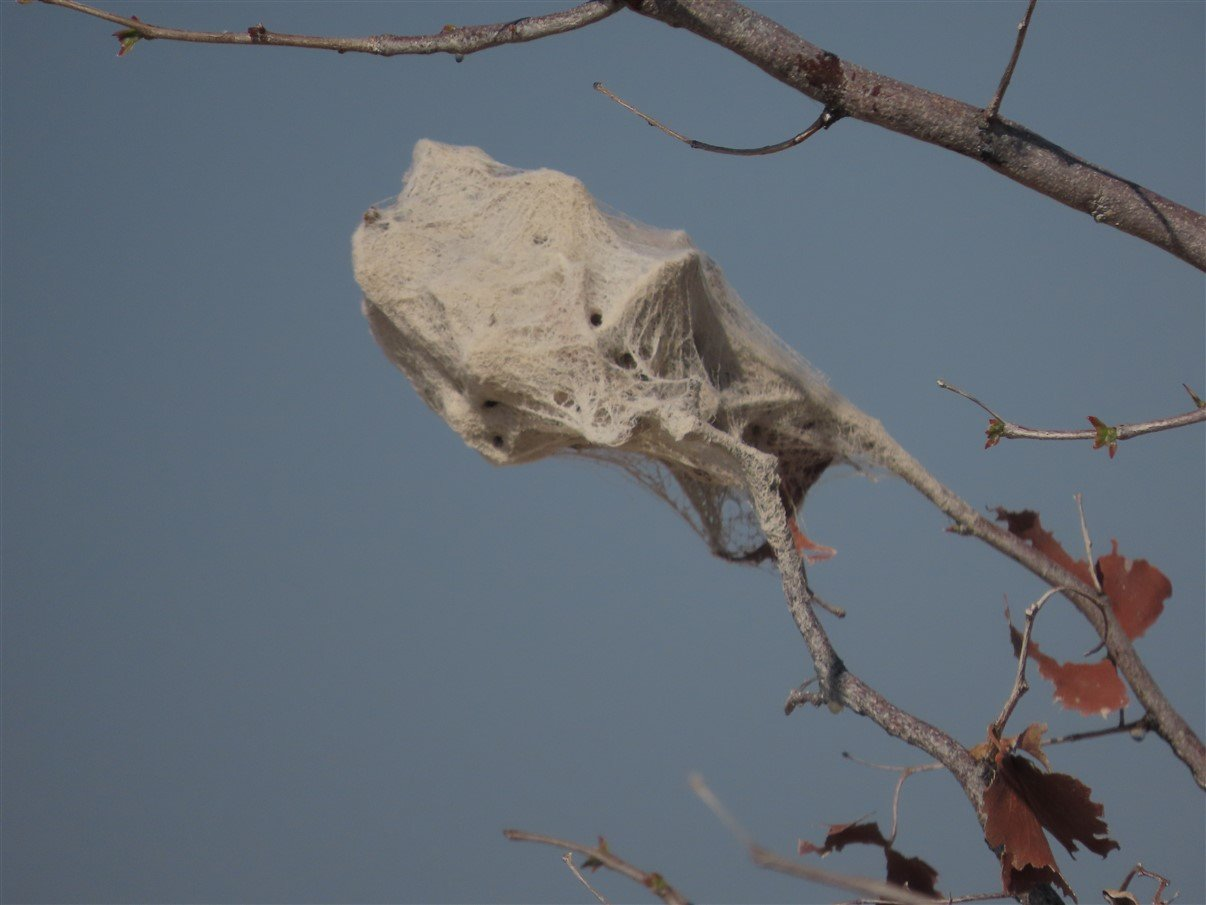
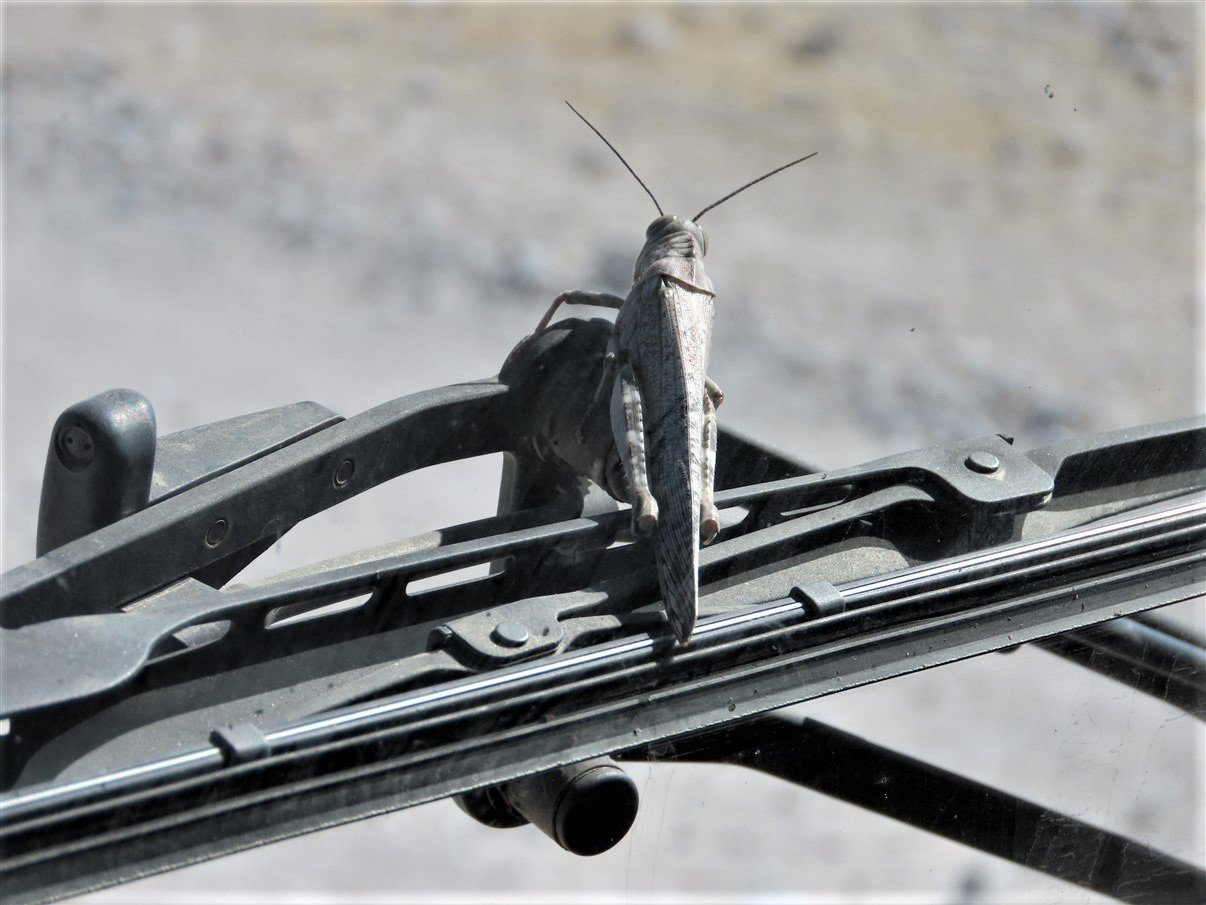
Although we’re not really bird people, we do like the challenge to try taking a photo for as long as the birds are still. Doesn’t always work out, but sometimes we’re lucky
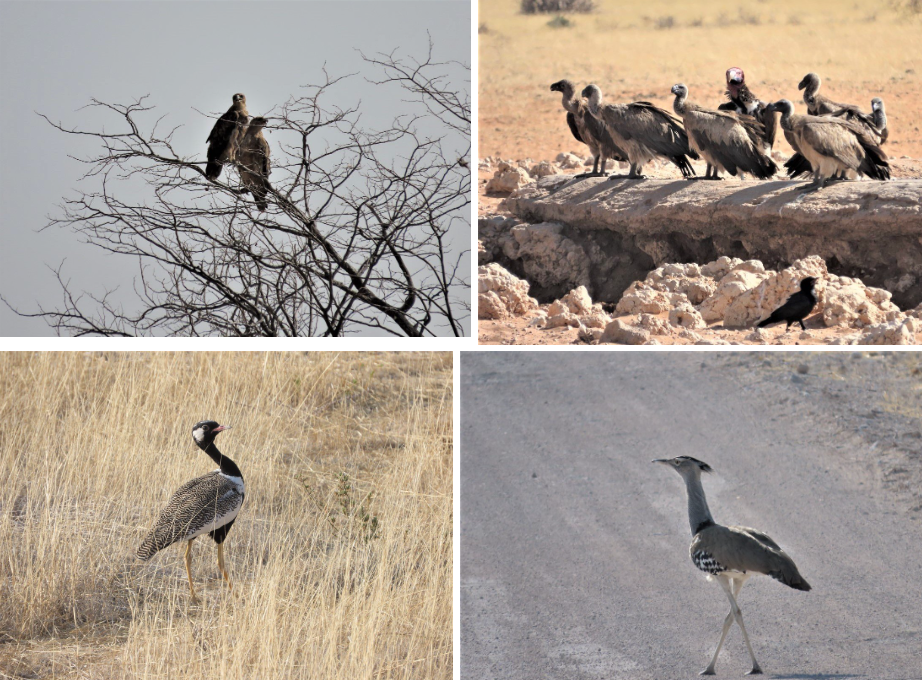
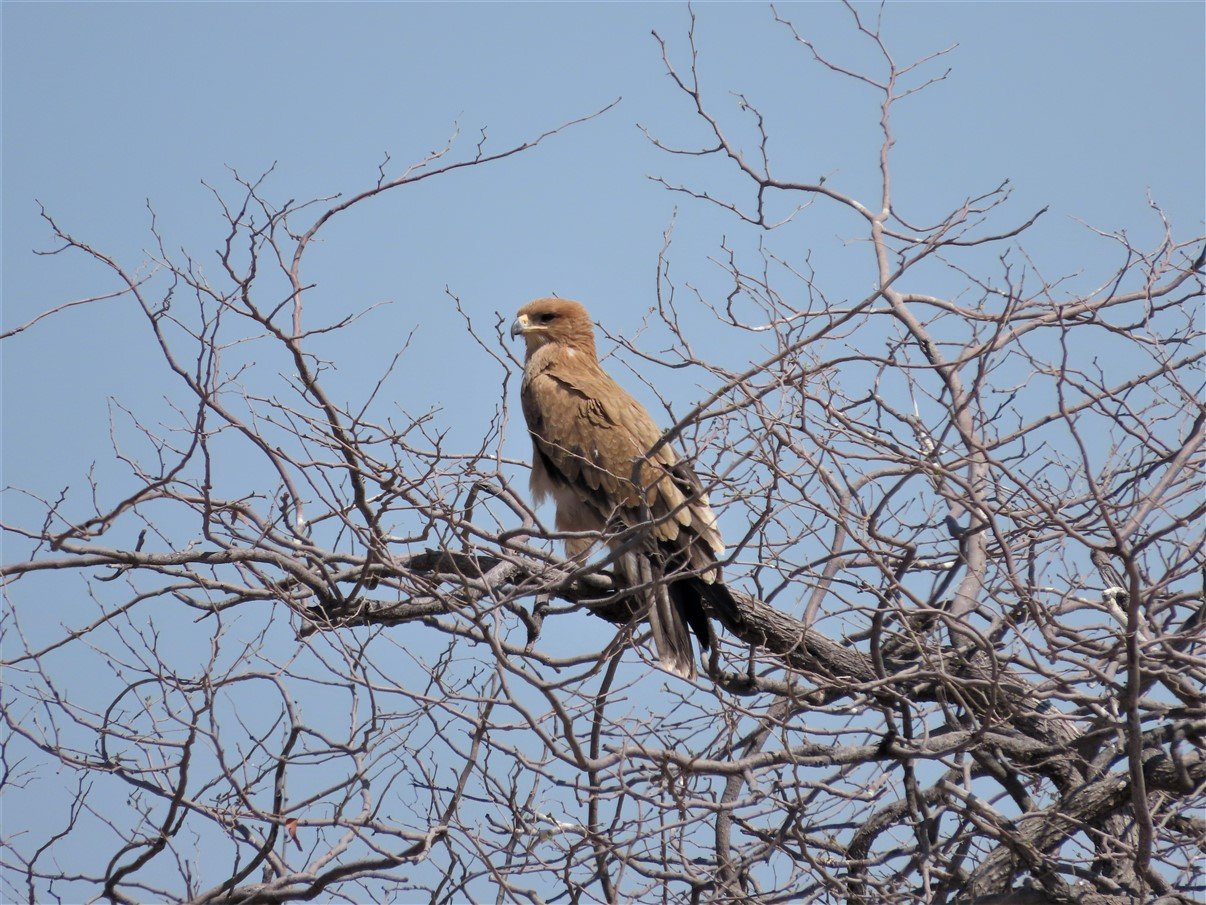
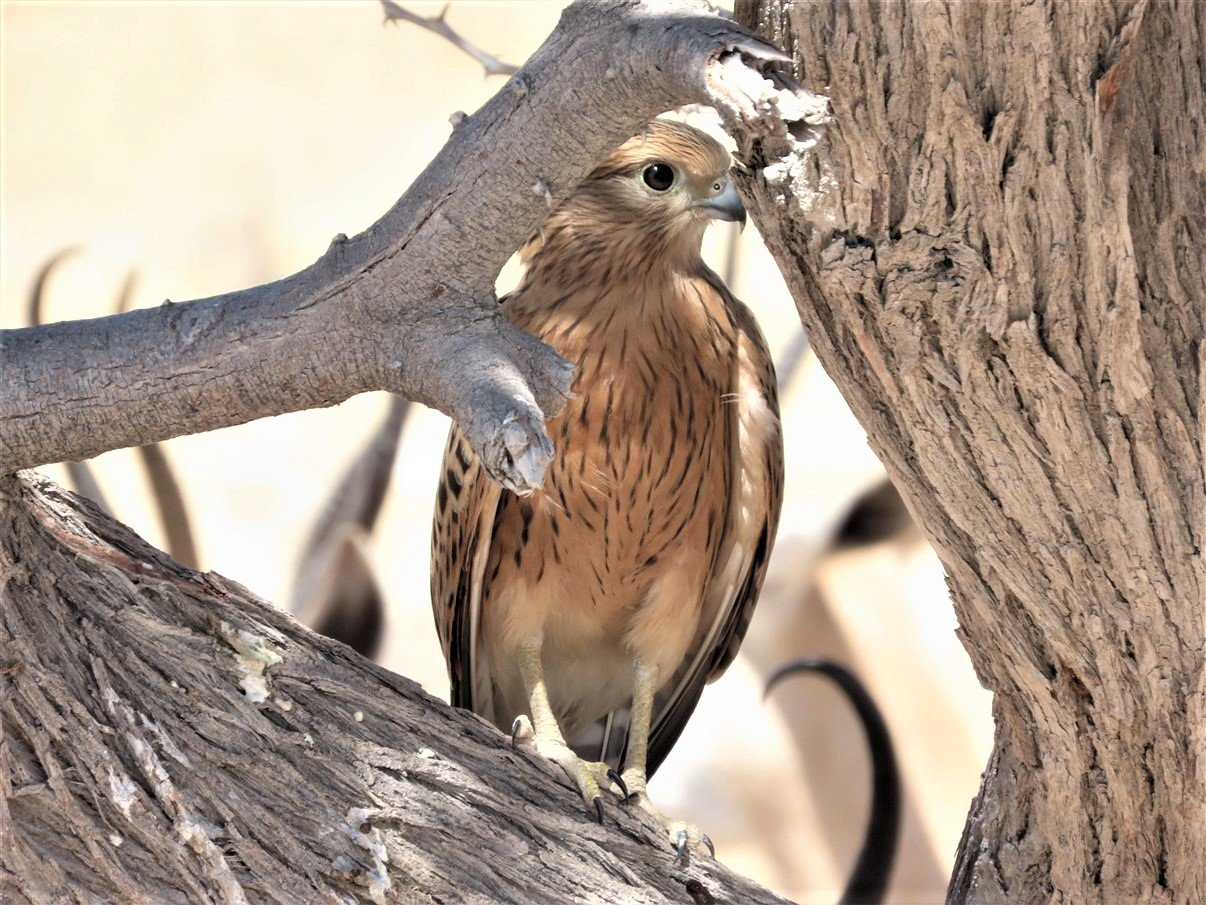
- In the heat of the day, animals seek shade and huddle together under bare and leafless thorn trees and bushes and sometimes even Trokkie provided shelter for little birds at the waterhole.
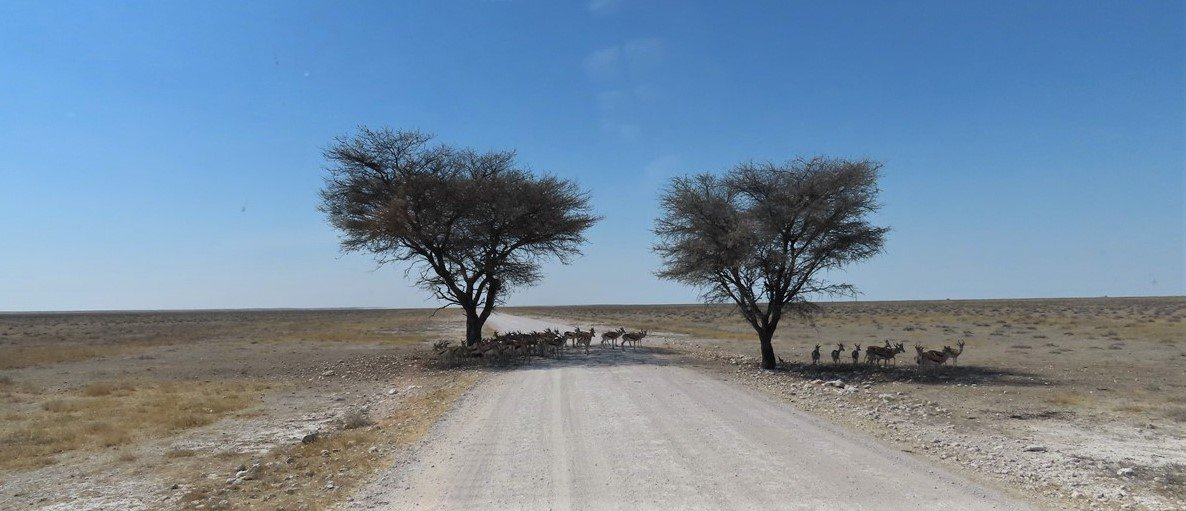
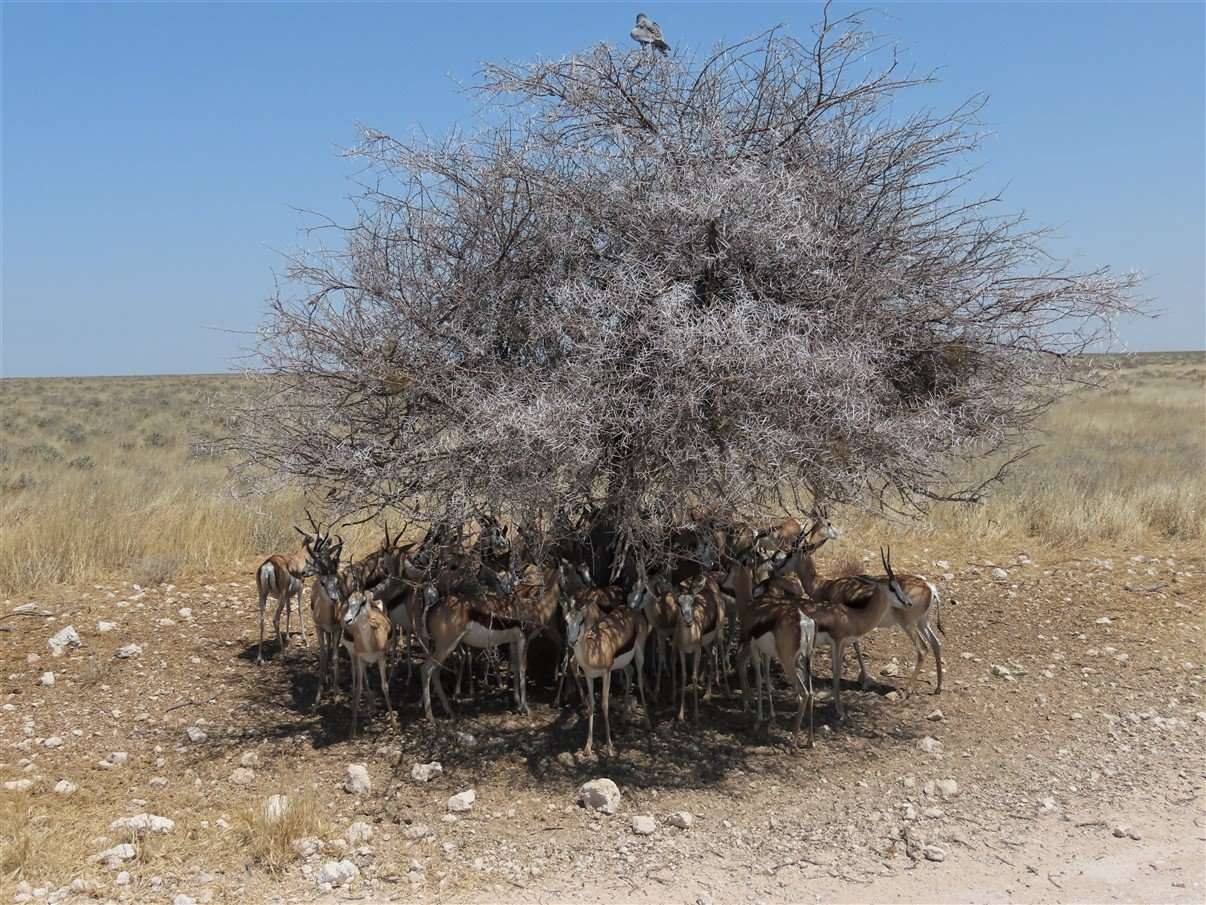
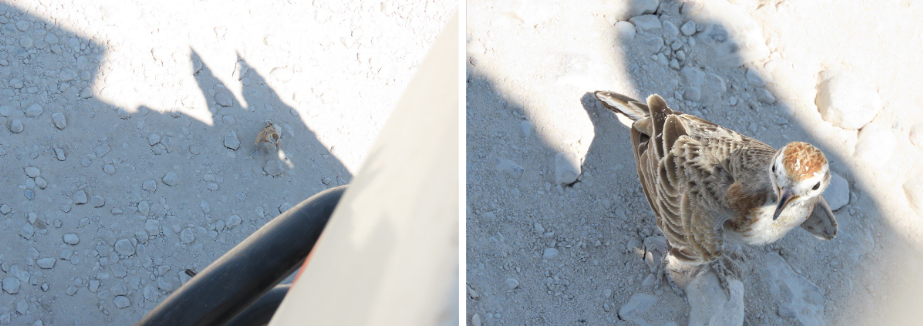
At the end of every day, Trokkie drove to camp in the glory of an African sunset, with her shadow following beside us!
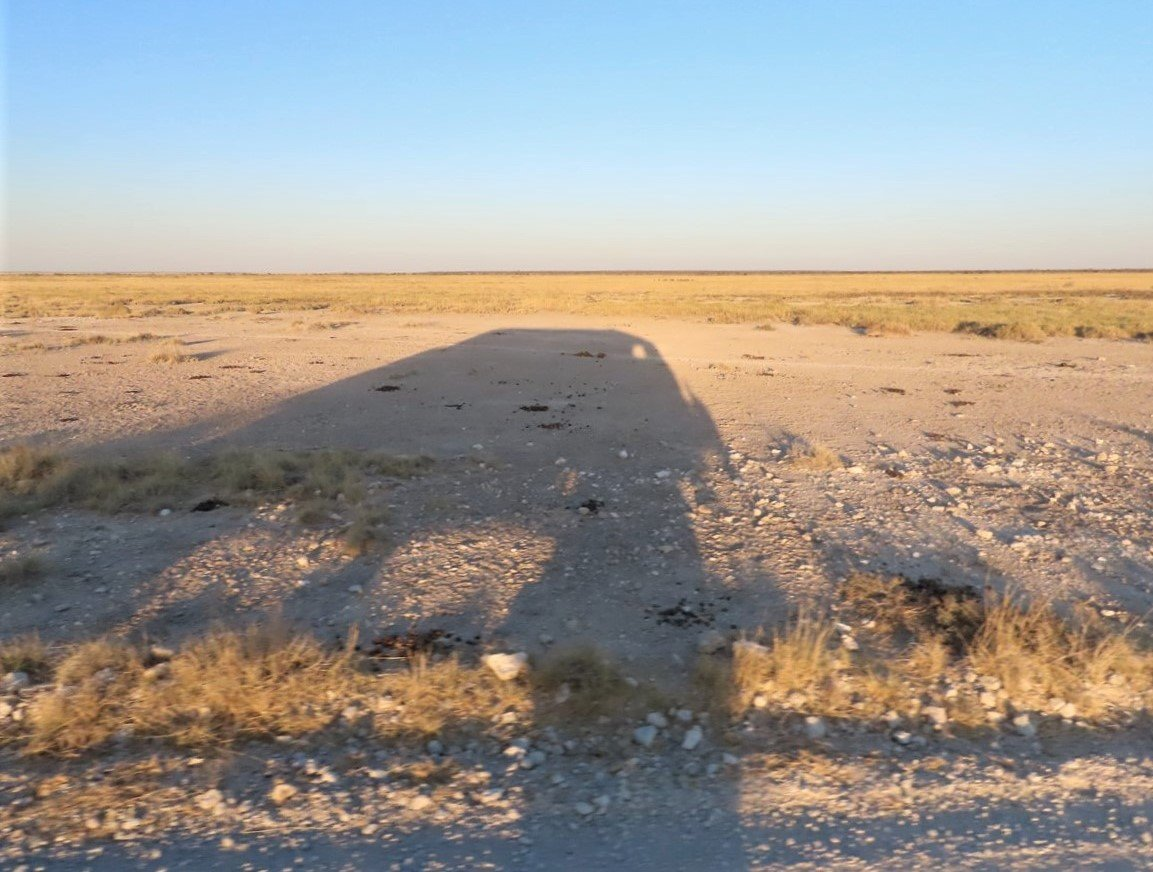
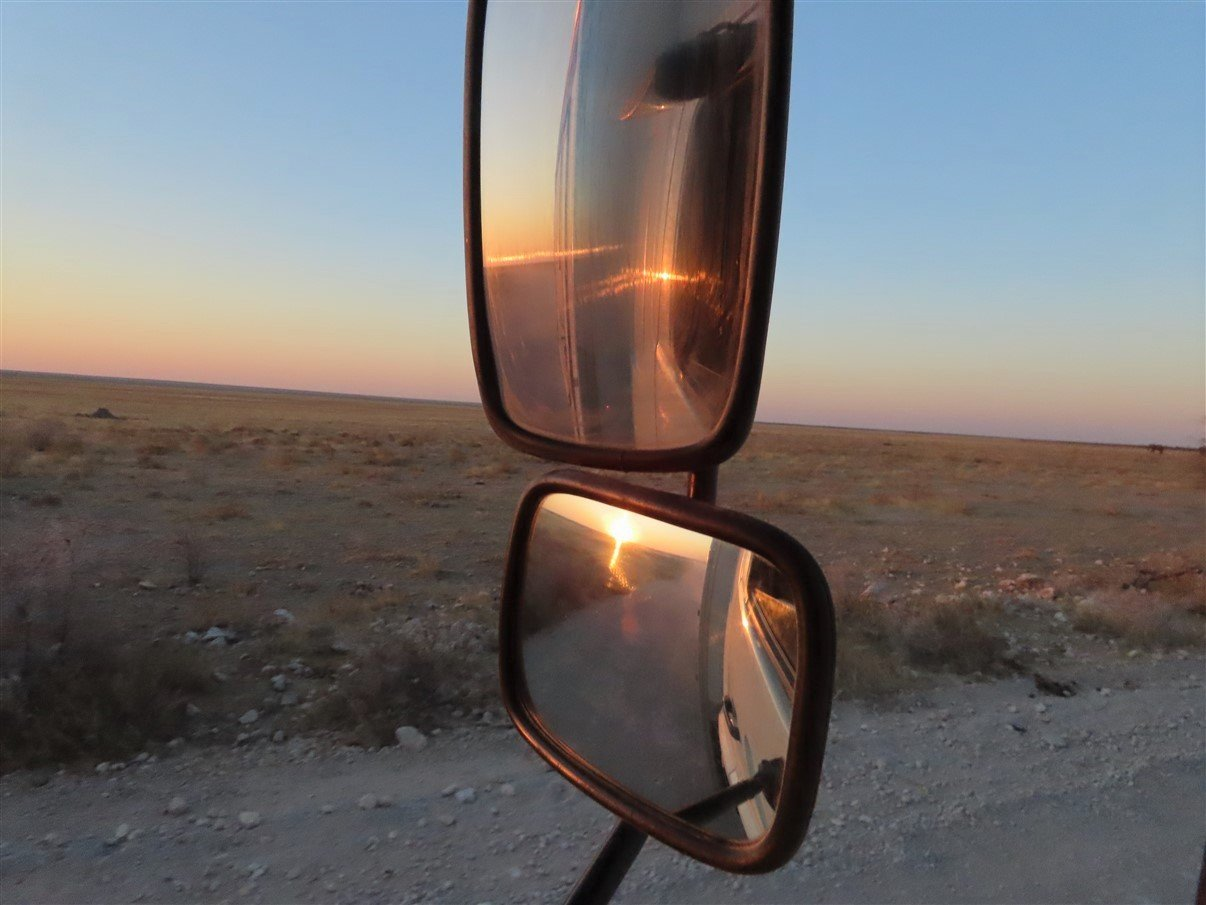
We eventually stayed in Etosha for 7 glorious days! But then unfortunately it was time to move on towards the Caprivi strip.
Watch below our video clips on Youtube.
For more photos, clips and videos follow us on
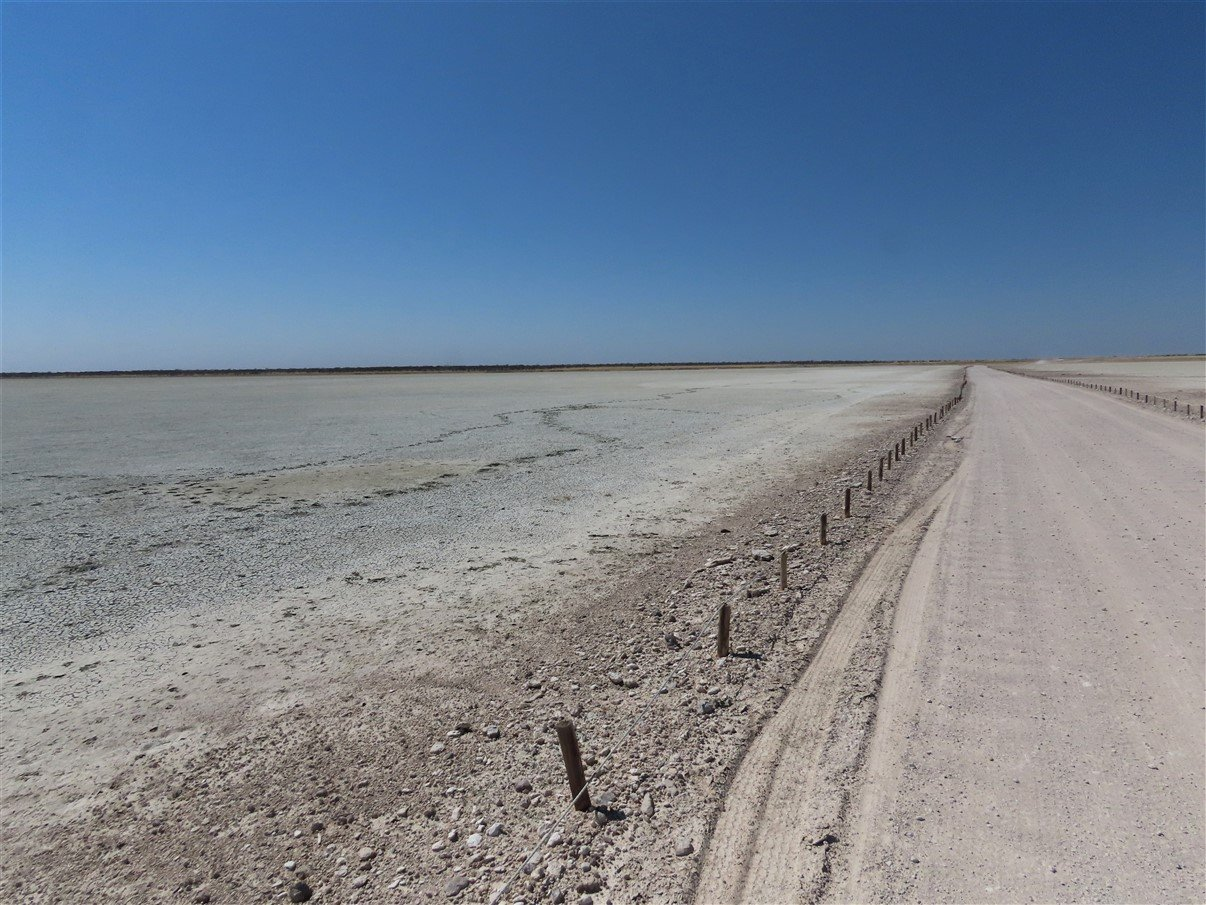
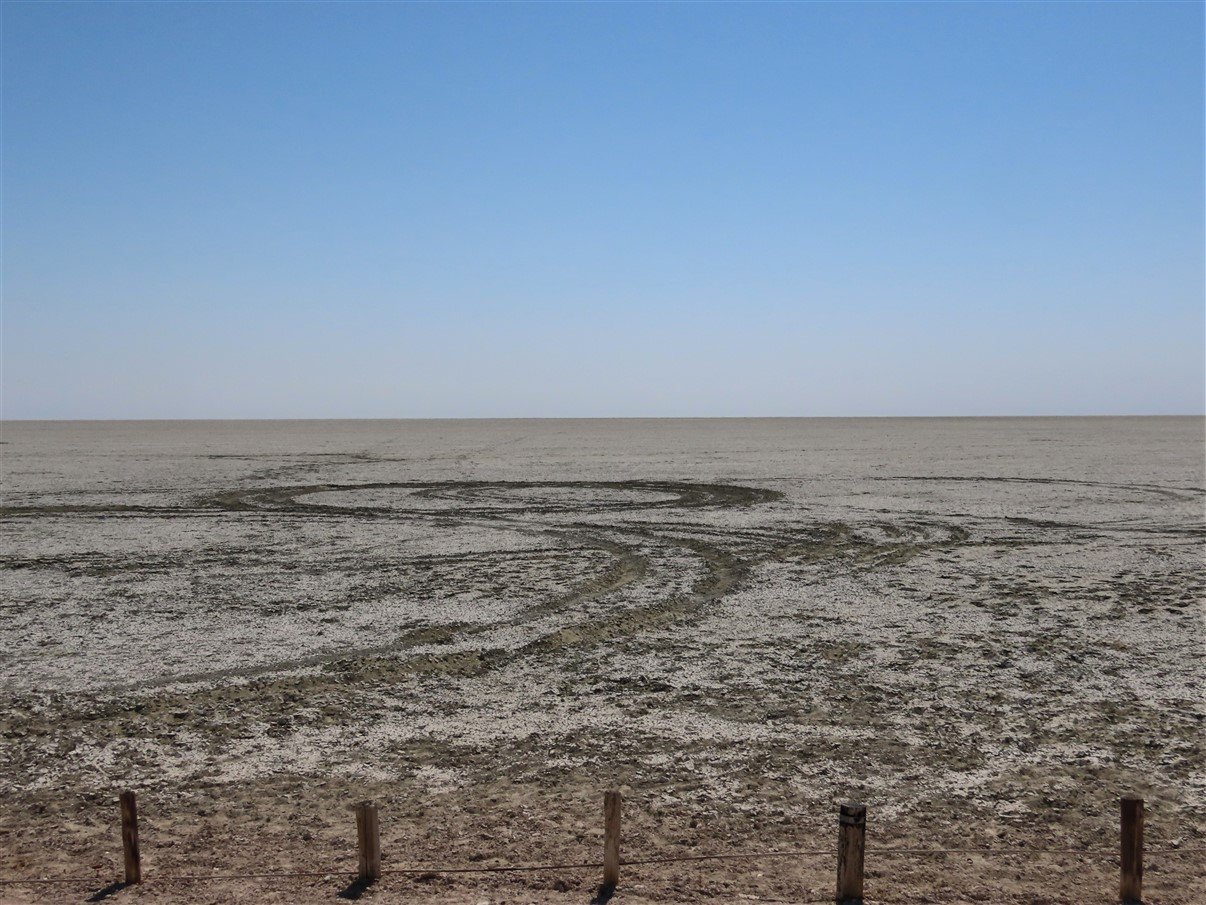
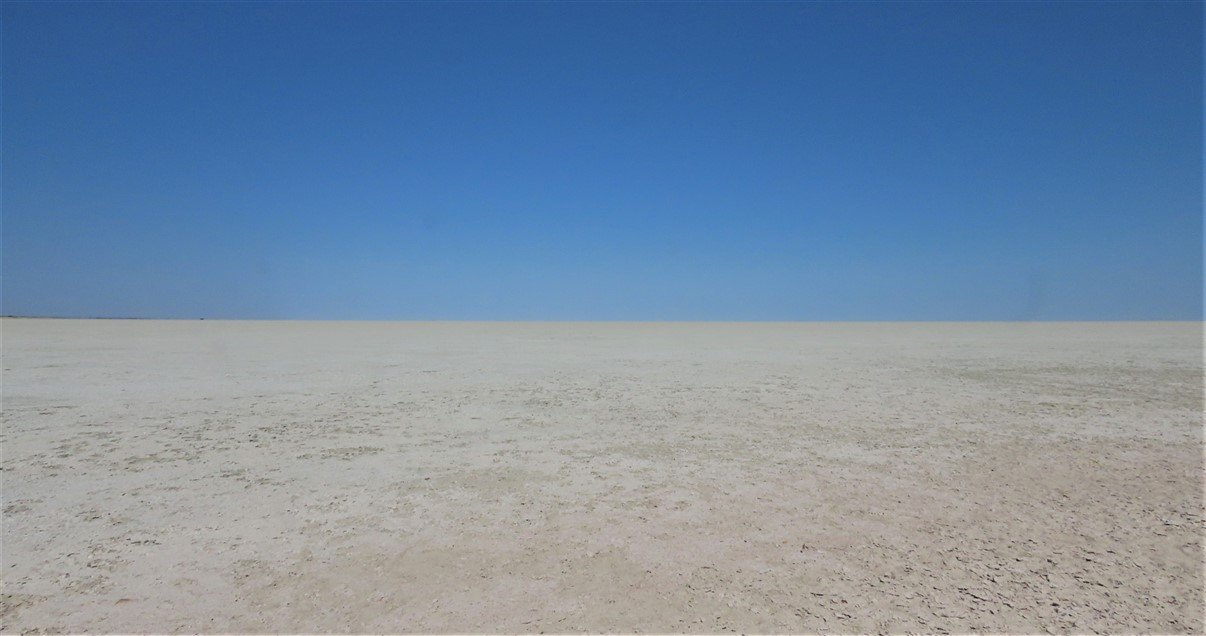
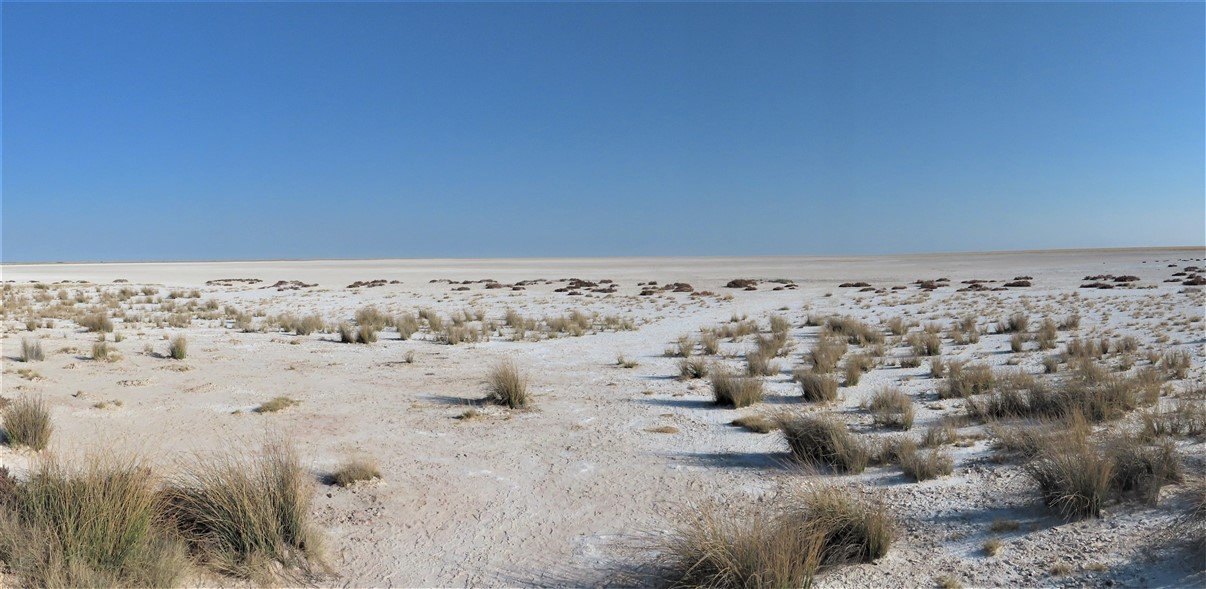
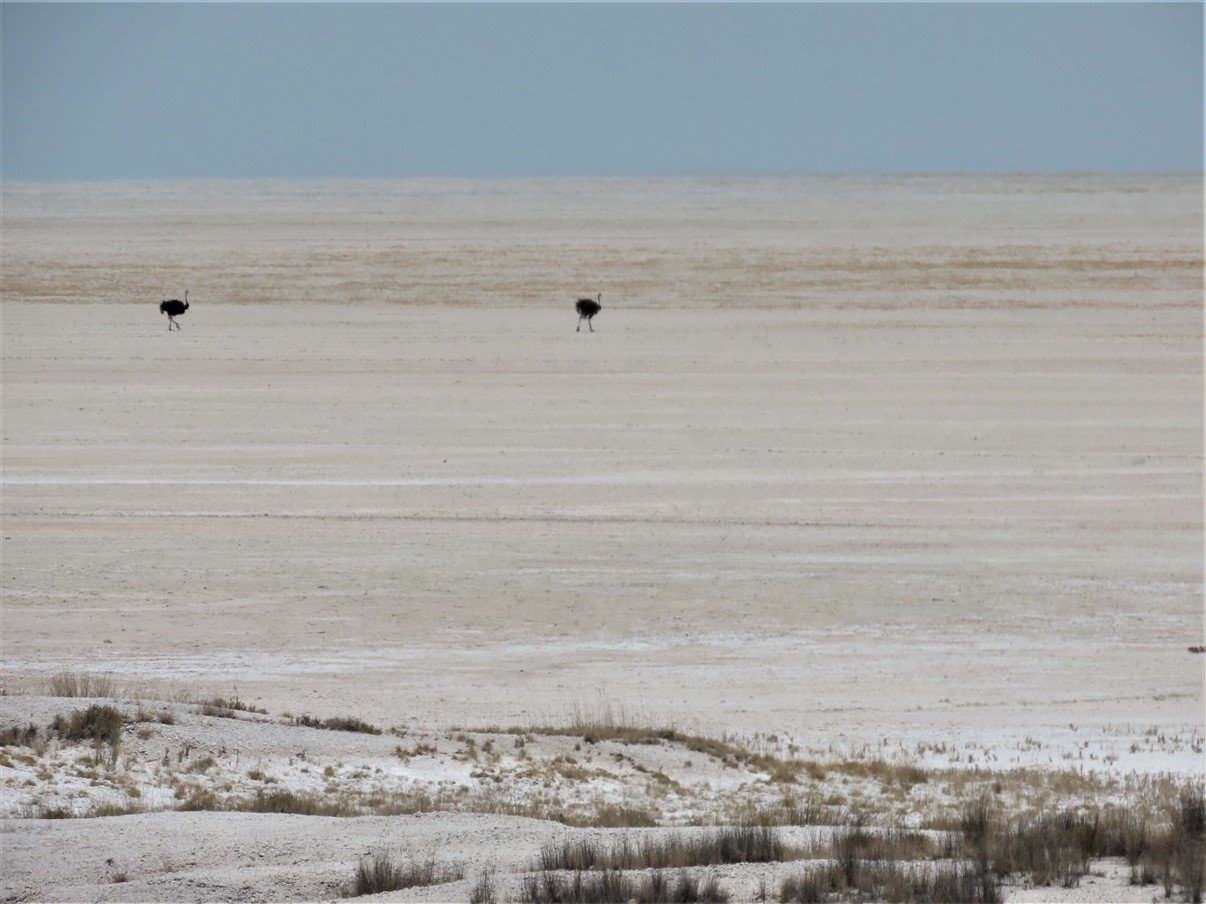
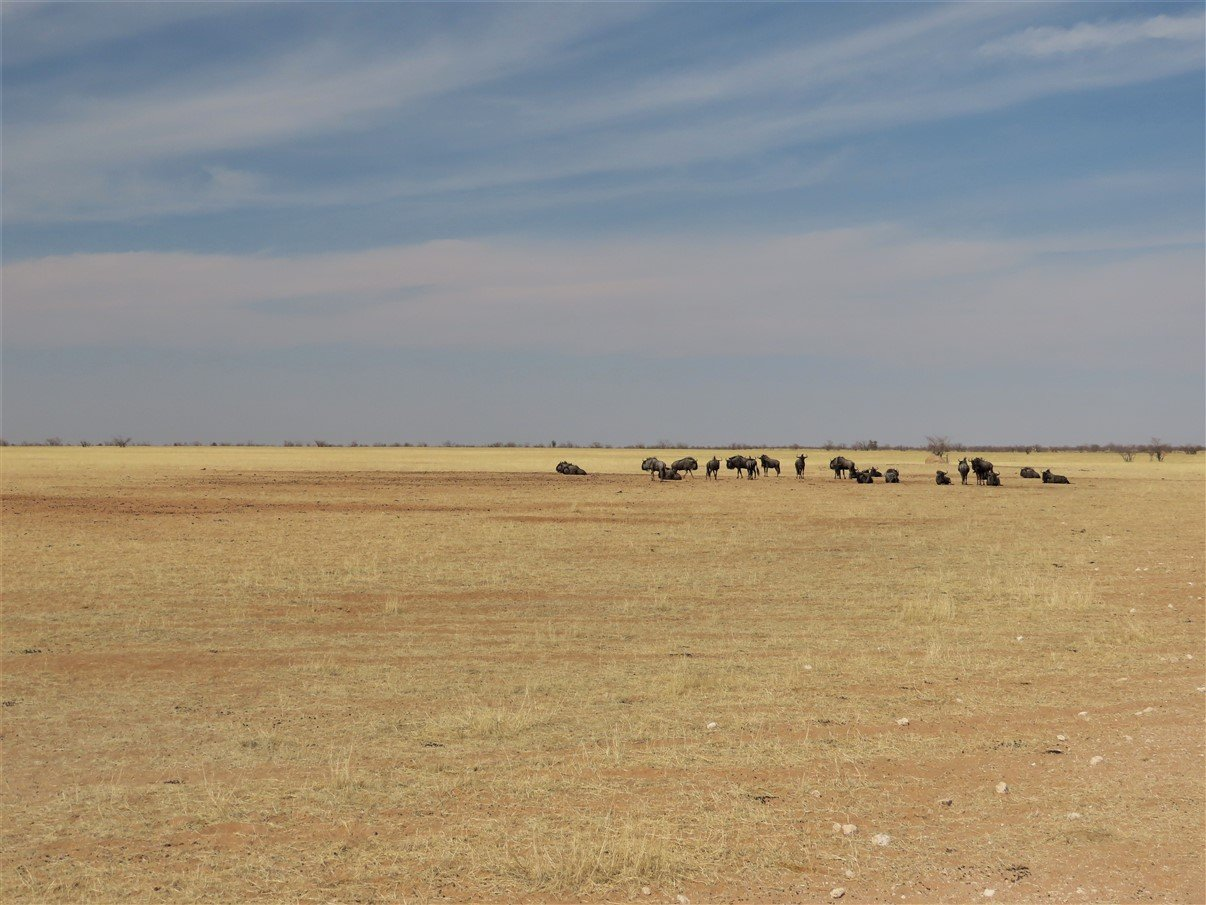
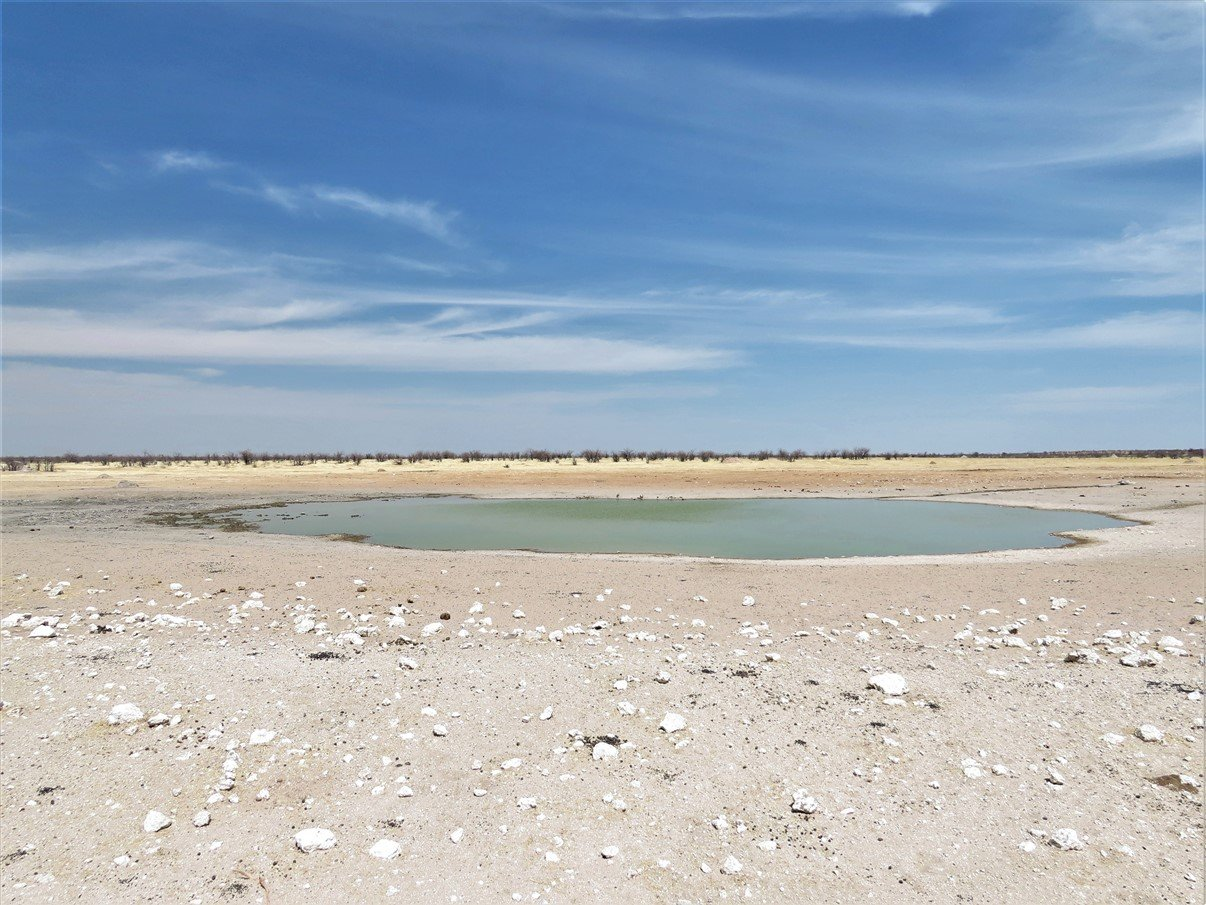
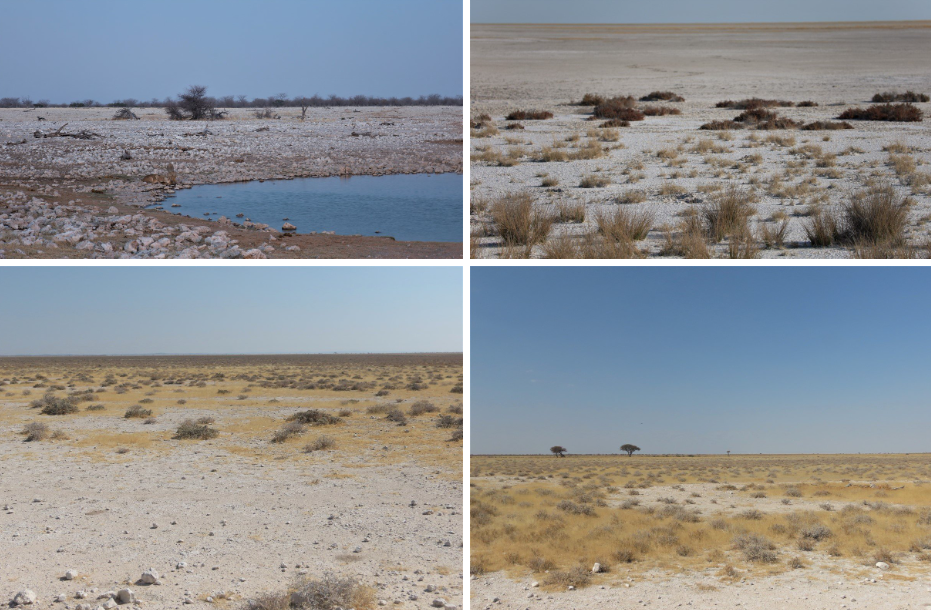
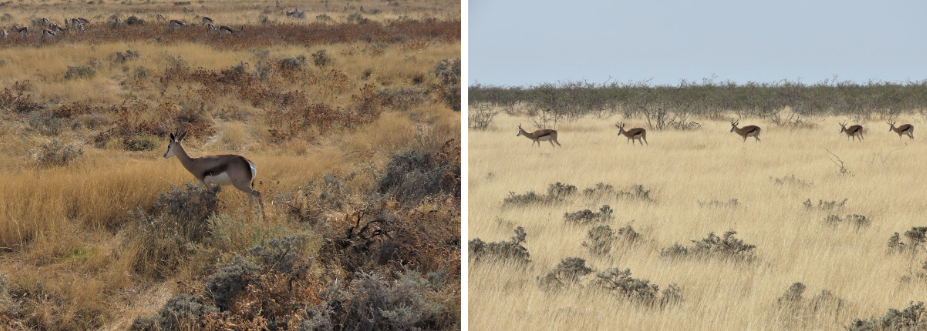
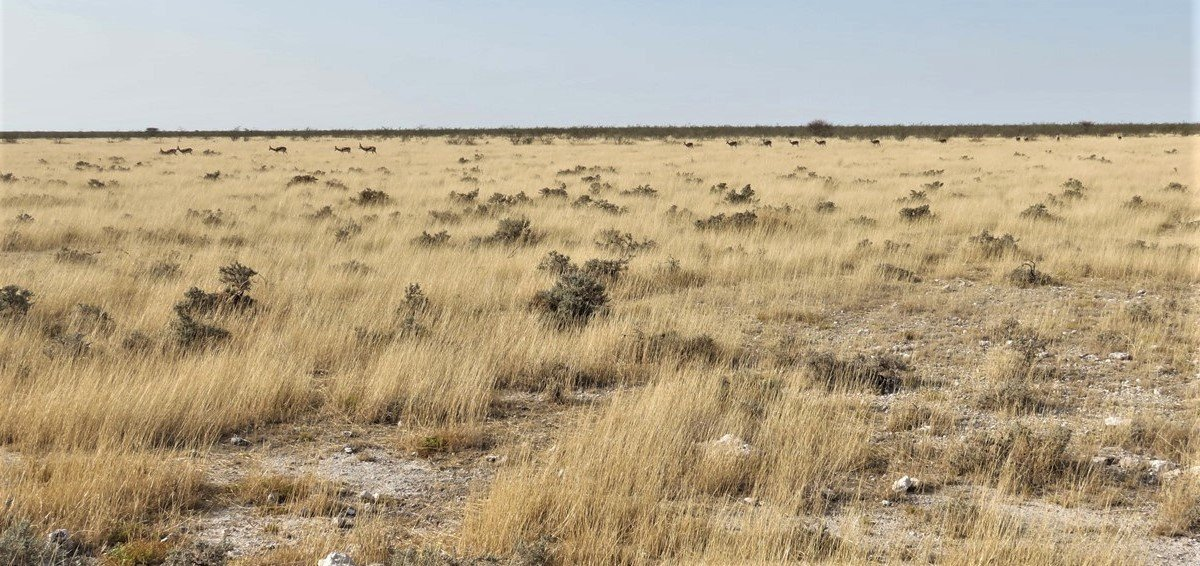
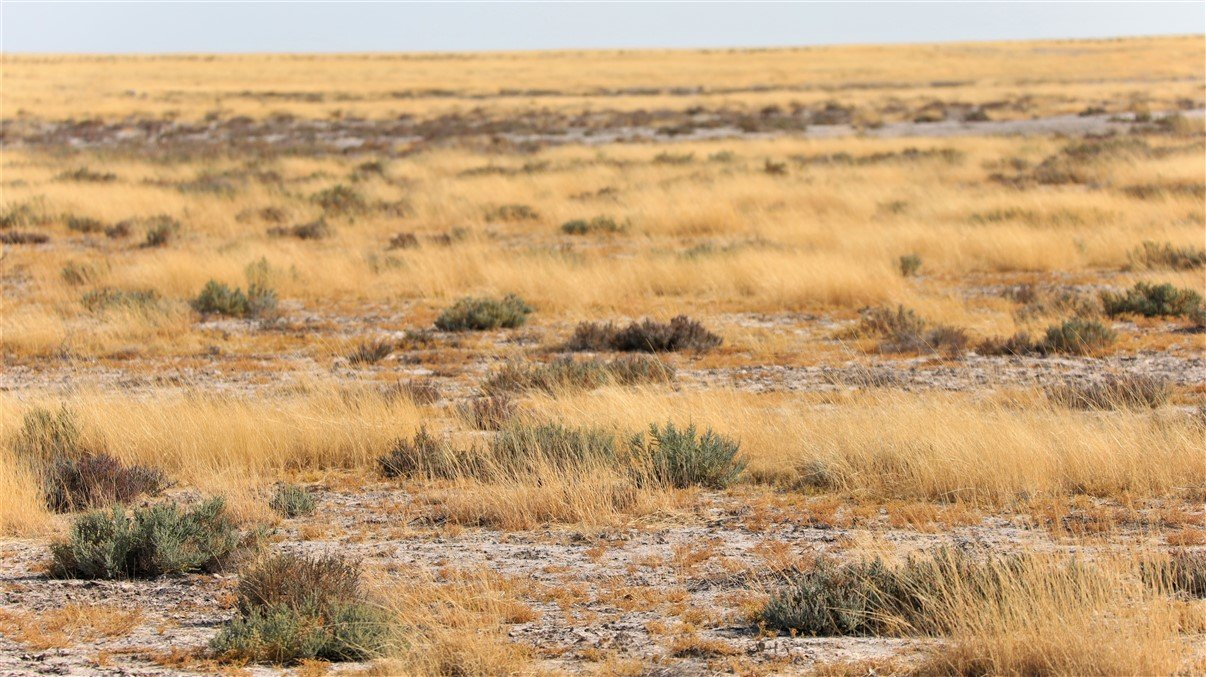

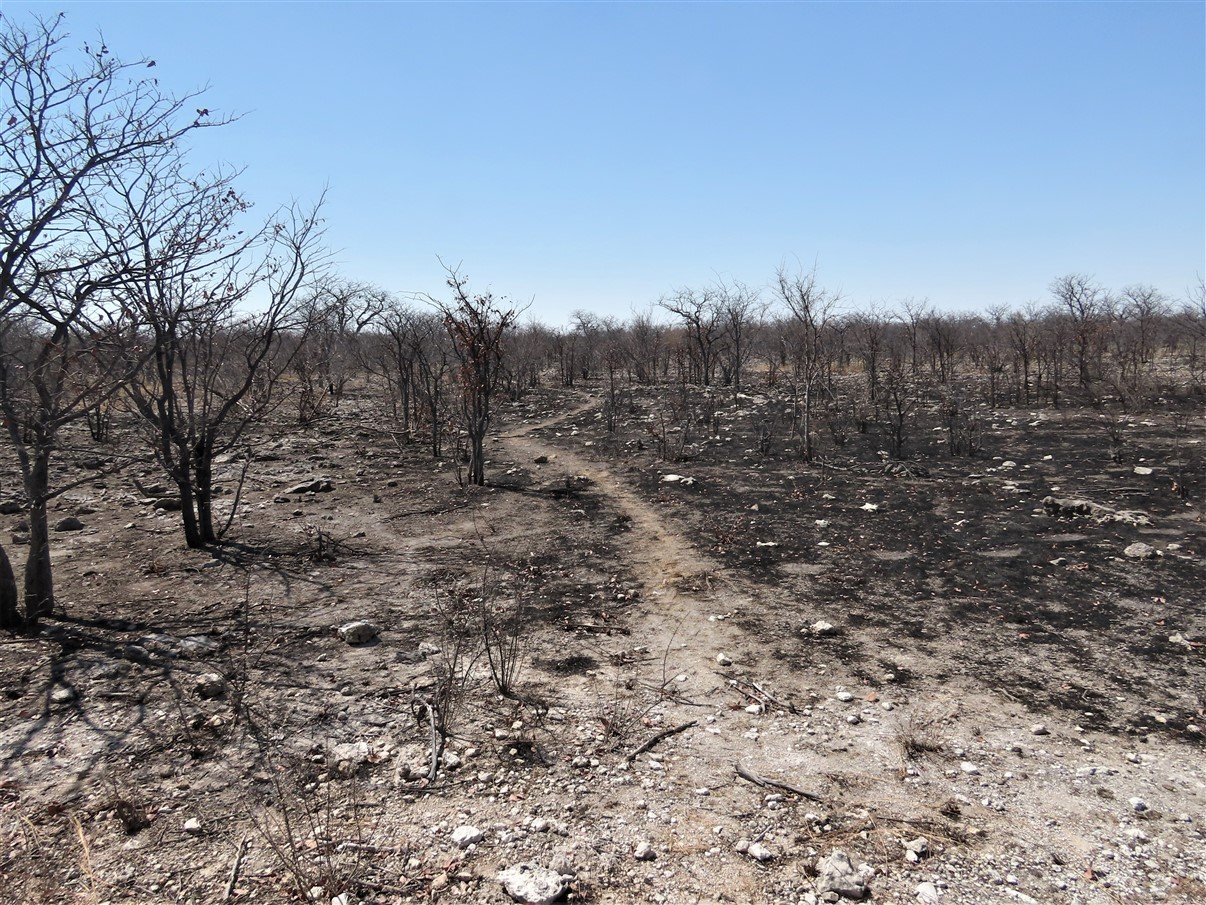
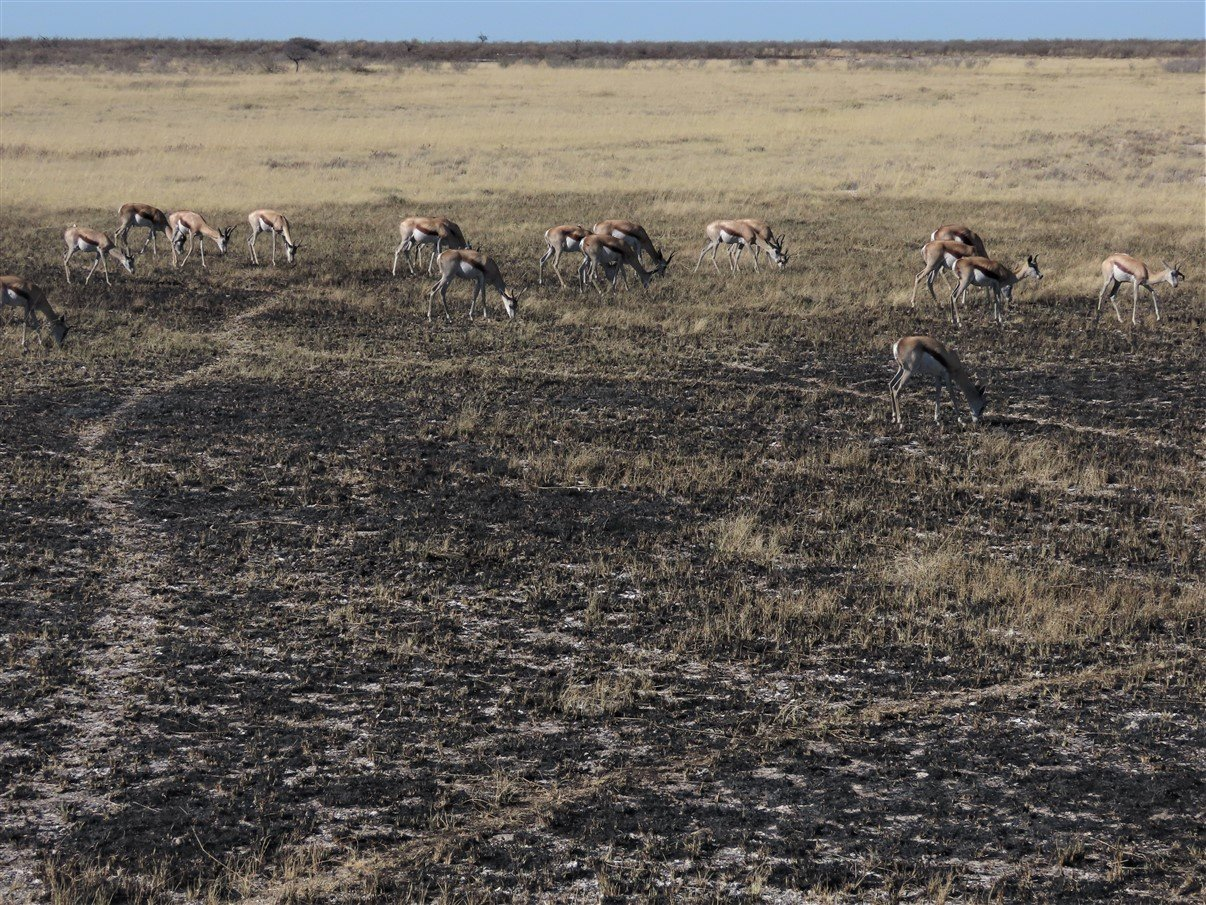
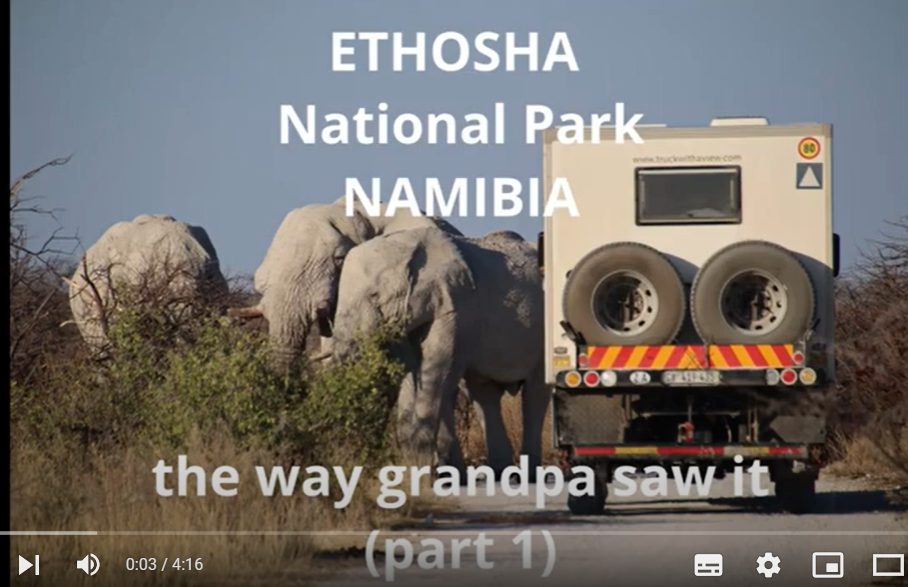
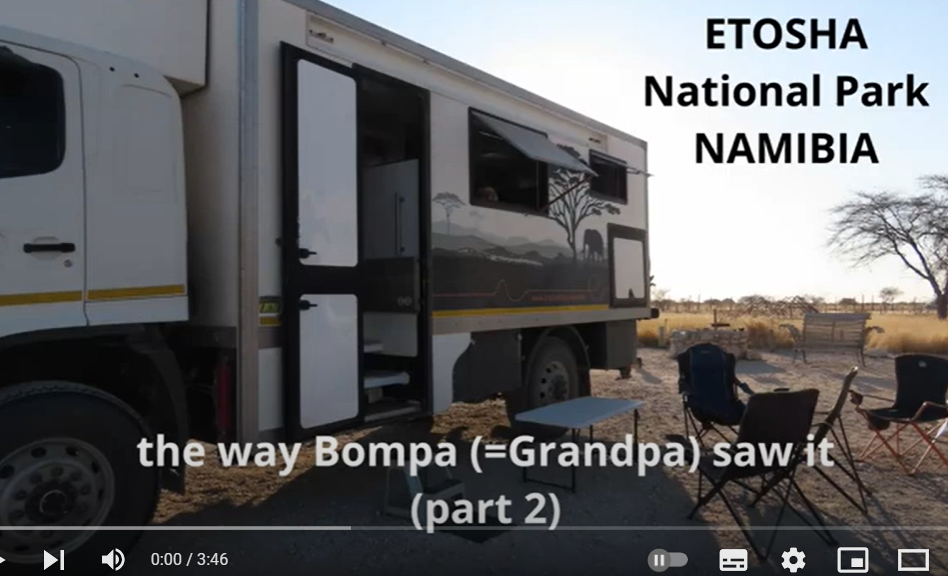
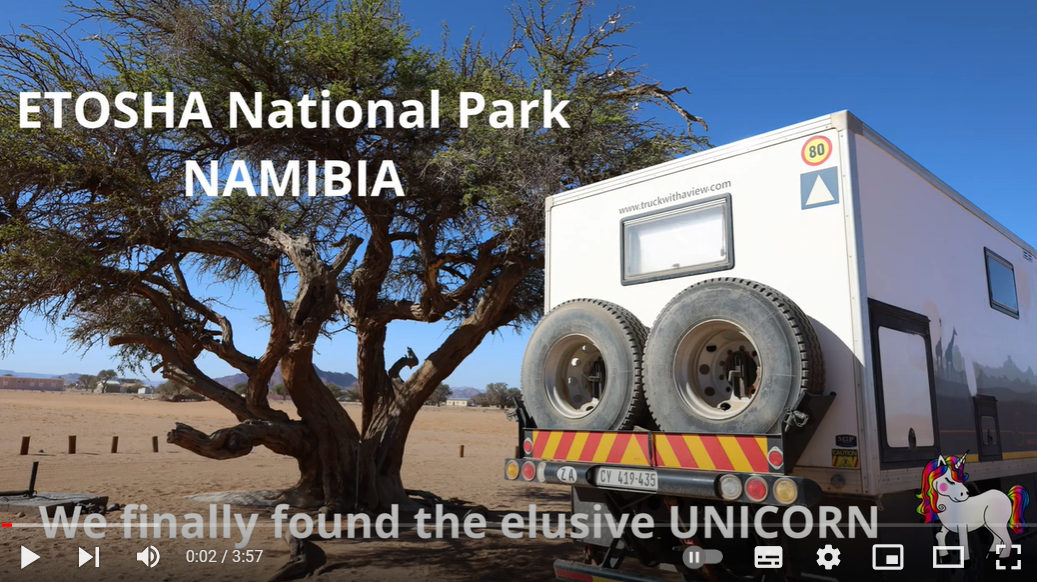


Etosha National Park part 2